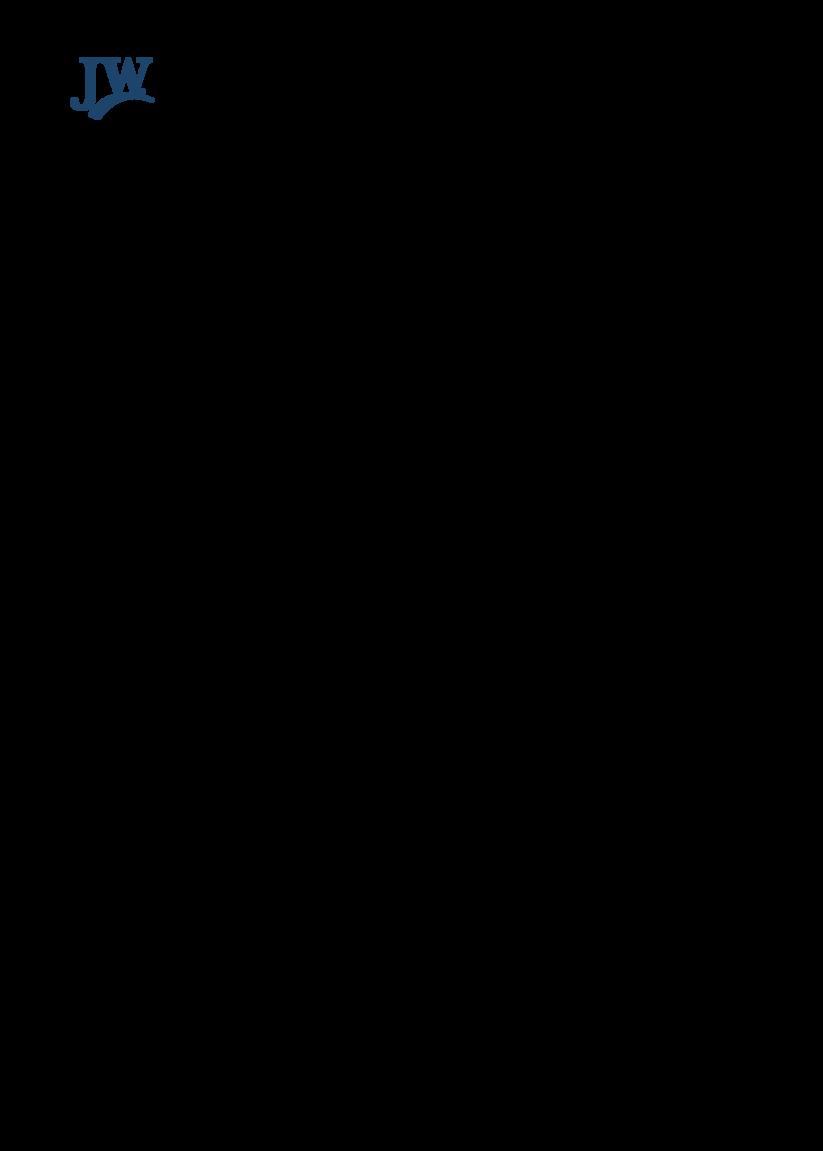

JELD-WEN Sustainability Report 2024

As a manufacturer of award-winning windows and doors, we have a responsibility to invest in our planet, people and communities.
We strive for innovation and energy efficiency in our products and operations, sustainability and circularity in our supply chain and products, safety and inclusion surrounding our people, and transparency in our goals and reporting. In everything we do, we stay true to our purpose: We bring beauty and security to the spaces that touch our lives.
à Read more: CEO Letter, page 4

William J. Christensen Chief Executive Officer
JELD-WEN Holding, Inc.

Sustainability is an essential part of JELD-WEN’s transformation journey, guiding how we shape our business, support our people and deliver long-term value. As we work toward achieving our full potential, we remain committed to three key pillars — people, performance and strategy — all of which are deeply intertwined with our sustainability efforts.
We are building an inclusive and equitable workplace where our associates can thrive, growing their careers in an environment that reflects our values. This commitment extends beyond words — we are investing in training focused on essential behaviors like safety, continuous improvement and accountability in our daily operations. As part of this focus, we are committing to a new goal of less than 1.0 Total Recordable Incident Rate (TRIR) by 2030.
We continue to lay the foundation for environmental stewardship by leveraging our history of protecting natural resources. Our sustainability goals are designed to reduce our operational environmental footprint while supporting our customers through the expansion of our sustainable product offerings. By 2030, we are committed to ensuring 100 percent of wood used in production is responsibly sourced according to our Global Wood Sourcing Policy Statement. By 2050, we aim to send zero manufacturing waste to landfills, as well as achieve net zero Scope 1 and Scope 2 greenhouse gas (GHG) emissions.
Achieving these ambitious goals takes time, commitment and transparency. We are holding ourselves accountable, and this report highlights both our progress and the concrete actions we are taking to drive lasting change. Our financial performance and shareholder value are equally impacted by these efforts. Sustainability is not just a responsibility — it is a business driver, helping us improve efficiency, reduce waste and create long-term growth.
We are honored to see external organizations recognizing our efforts. In 2024, JELD-WEN was acknowledged for sustainability excellence by EcoVadis, ENERGY STAR®, Forbes and Newsweek, marking our presence as a trusted industry leader. These achievements reflect the dedication of our talented team members who have embraced our commitment to sustainability and continue to shape a better future.
While there is still work to be done in our Environmental, Social and Governance (ESG) journey, the momentum is strong. Our collective passion for protecting the planet and driving meaningful impact will continue to propel us forward. I look forward to sharing more progress in the coming year.
William J. Christensen Chief Executive Officer JELD-WEN Holding, Inc.
2024 Highlights
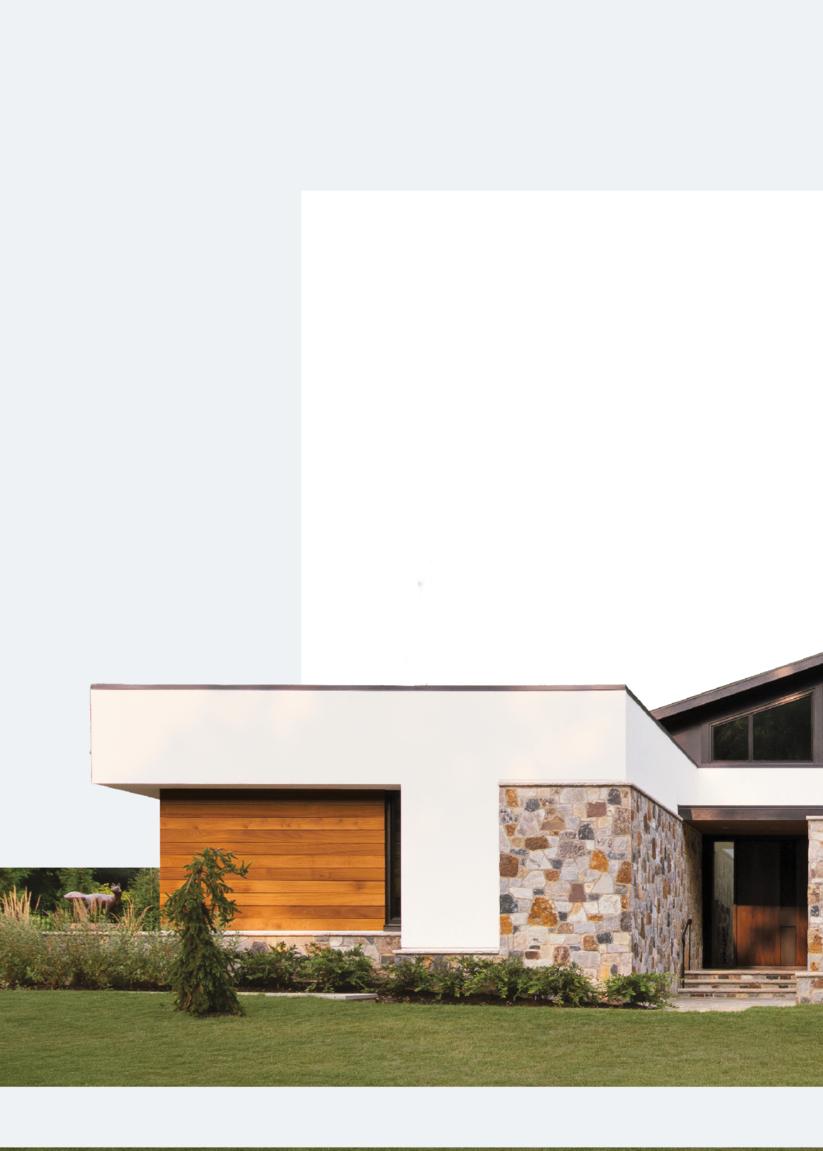
Environmental
2%
reduction in absolute GHG emissions in 2024 compared to 2023
8
Sites certified to ISO 50001 energy management standard
2
Sites awarded Cradle to Cradle bronze certification
12%
reduction in metric tons of waste sent to landfills in 2024 compared to 2023
62
Environmental Product Declarations (EPDs) published as of December 31, 2024
7%
Reduction in energy consumed in 2024 compared to 2023
5%
reduction in loss time injury rate in 2024 compared to 2023
5
average hours of training per associate2
400+
DE&I courses offered in 2024

35% of U.S. workforce is ethnically diverse1
1,300+
Leaders trained in our Leader Alignment Training
40% women on the Board of Directors
98% of associates trained and attested to the Code of Conduct3
Who We Are

JELD-WEN Holding, Inc.(‘JELD-WEN’ or the ‘company’) is a publicly traded company headquartered in Charlotte, North Carolina, United States. We are a leading global designer, manufacturer and distributor of high-performance interior and exterior doors windows and related building products, serving the new construction and repair and remodeling sectors.
As of December 31, 2024, we operate 79 manufacturing or distribution facilities in 14 countries located in North America and Europe.
Our customers include wholesale distributors and retailers, as well as individual contractors and consumers. The JELD-WEN family of brands includes JELD-WEN® worldwide, LaCantina and VPI™ in North America, and Swedoor® Kellpax® and DANA® in Europe.
For more details on our financial performance, view our 2024 Annual Report and other filings with the U.S. Securities and Exchange Commission.
2024 Key Facts
$3.8 billion in net revenue ~
16,000 employees worldwide
Our Purpose:
We bring beauty and security to the spaces that touch our lives.
Our Values:
We build businesses ethically and safely, invest in people, inspire customers through innovation, deliver on our promises, and improve every day.
Our Approach to Sustainability
At JELD-WEN, sustainability is foundational to our business as we work to protect our planet and its resources.

Our ongoing commitment to sustainability cascades through our company from the use of recycled material to building long-lasting, energy-saving products; from lean manufacturing to operating close to markets to minimize fuel consumption and greenhouse gas emissions.
Sustainability has been a core principle at JELD-WEN since the early days of its founding.
Founder Dick Wendt initiated efforts to reduce manufacturing waste by repurposing wood byproducts — transforming what was once considered waste into valuable materials like molded doorskins. These early innovations not only minimized environmental impact but also demonstrated JELD-WEN’s forwardthinking commitment to sustainable manufacturing practices.
Today, that legacy continues to shape JELD-WEN’s ESG strategy and goals.
Our ESG Framework

Pillar 1:
Our Products
As makers of high-quality products that deliver on form and function, we are dedicated to building long-lasting, energy-saving products that improve our customers’ lives.
For more details, see the Our Products chapter.
Pillar 2:
Environmental
We are committed to assessing our impact on the natural environment and our ability to manage environmental risks and opportunities.
For more details, see the Environmental chapter.
Pillar 3:
Social
We are focused on evaluating how we manage and address social factors, such as labor practices, diversity, equity & inclusion, human rights, community relations, customer satisfaction and employee wellbeing.
For more details, see the Social chapter.
Pillar 4:
Governance
We are committed to the highest standards of ethics, integrity and transparency. We are direct in our goals, transparent in our structures, responsible in our reporting and accountable for our actions.
For more details, see the Governance chapter.
Global certifications
Sustainable products
Products’ social impact
Climate & energy
Innovation & the circular economy
Biodiversity & ecosystems
Air quality
Water resources
Employee working conditions, health & safety
Diversity, equity & inclusion
Talent attraction, retention & development
Community engagement
Product quality & safety
Sustainable procurement
Workers in the supply chain
Corporate governance & ethics
Data protection & cybersecurity
Alignment to the United Nations Sustainable Development Goals (SDGs)
The United Nations SDGs provide a shared blueprint to achieve a more sustainable future as we address the critical global challenges facing our planet — and humanity. We have identified eight SDGs that are most relevant to JELD-WEN’s 2030 and 2050 goals and key initiatives:

Ensure healthy lives and promote wellbeing for all at all ages.
Ensure inclusive and equitable quality education and promote lifelong learning opportunities for all.
Ensure access to affordable, reliable, sustainable and modern energy for all.
Promote sustained, inclusive, and sustainable economic growth, full and productive employment, and decent work for all.
Build resilient infrastructure, promote inclusive and sustainable industrialization, and foster innovation.
Ensure sustainable consumption and production patterns
Take urgent action to combat climate change and its impacts4
Protect, restore and promote sustainable use of terrestrial ecosystems, sustainably manage forests, combat desertification, halt and reverse land degradation, and halt biodiversity loss.
Our Goals and Progress
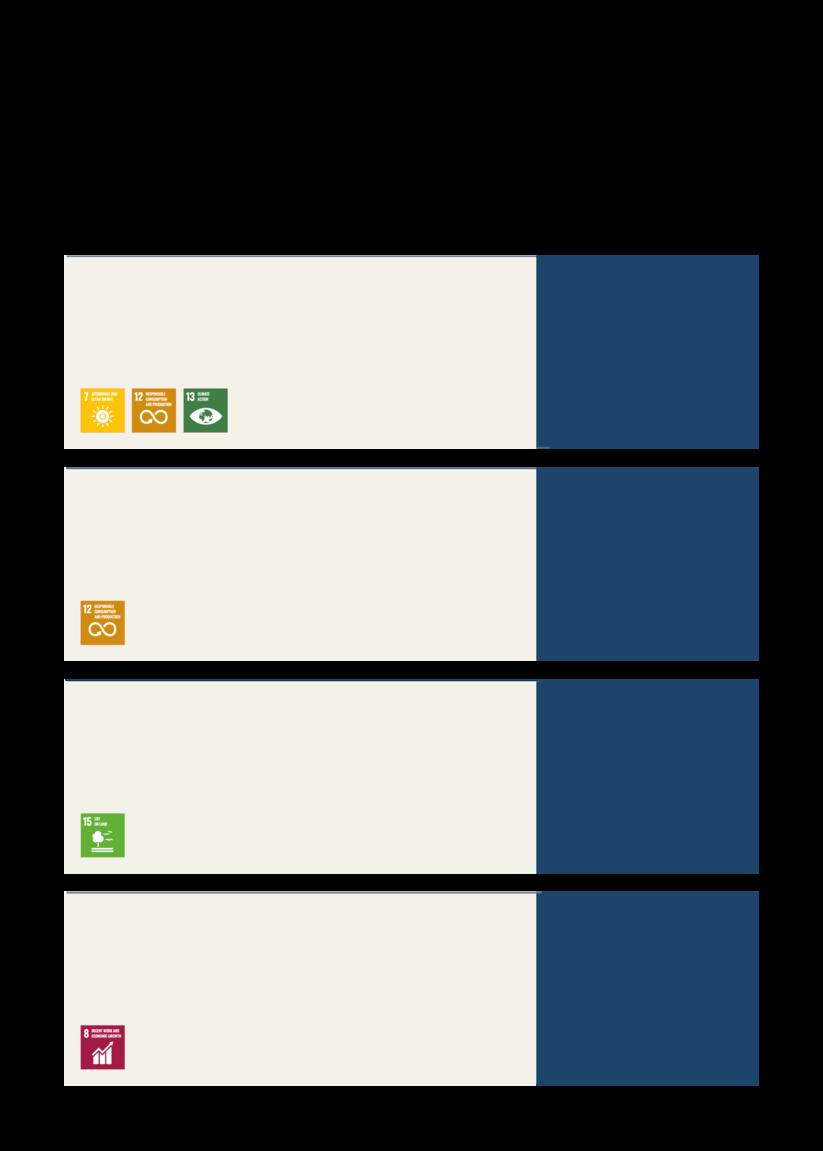
How do we define the goal?
Net zero means achieving balance between the amount of GHG we produce and the amount that we remove from the atmosphere. Scope 1 emissions are direct emissions from our owned or controlled sources, such as forklifts, trucks and natural gas boilers. Scope 2 emissions are indirect emissions from sources such as purchased electricity.
How do we define the goal?
Sending zero manufacturing waste to landfills means diverting all byproducts of our manufacturing processes and packaging away from landfills, with an emphasis on reuse or recycling.
How do we define the goal?
of
How do we define the goal?
Following U.S. OSHA guidance, the total recordable incident rate corresponds to: Number of OSHA recordable injuries and illnesses x 200,000/Employee total hours worked.
Double Materiality Assessment
In 2024, we completed a double materiality assessment in alignment with applicable guidance, including from the European Union’s Corporate Sustainability Reporting Directive (CSRD) and the European Sustainability Reporting Standards (ESRS). This assessment considers materiality from two perspectives in the short, medium or long term: the outward impact we may have on people or the environment (i.e. impact materiality) and the inward financial impact on the business (i.e. financial materiality). In addition to preparing for compliance with CSRD and best practices, the benefits of a data-driven double materiality assessment include improved transparency and accountability, allowing us to better manage potential impacts and make informed decisions, and align sustainability efforts with business strategy.
Double Materiality Assessment
Methodology
In addition to conducting research on key trends and stakeholder expectations, we interviewed and surveyed internal and external stakeholders. Through this process, we were able to identify impacts, risks and opportunities (IROs) and their associated topics, specifically as they relate to our own operations and upstream and downstream value chain.
When evaluating impact materiality, impacts were assessed based on their severity, specifically considering their scale and scope, and if negative, the extent to which they are irremediable. For potential impacts, we considered their likelihood of occurring.
When evaluating financial materiality, risks and opportunities were assessed based on magnitude of the financial impact and the likelihood of those risks or opportunities materializing.
IROs and their associated topics rated significant or above are considered material. The results of the assessment are summarized below. We believe the learnings from the assessment will help inform and improve our ESG policies, practices and disclosures. For more details, see Material Topics Definitions.
Topic
Climate & Energy
Biodiversity & Ecosystems
Employee Working Conditions, Health & Safety (own workforce
Innovation & Circular
Economy (incl. Waste)
Product Quality & Safety
Sustainable Procurement
Talent Attraction, Retention & Development
Workers in the Supply Chain
Air Quality
Community Engagement
Corporate Governance & Ethics
Data Protection & Cybersecurity
Diversity, Equity & Inclusion
Water Resources
Our Approach to Sustainability

Stakeholder
Engagement
Understanding Our Stakeholders’ Perspectives
We proactively engage with our stakeholders throughout the year to learn more about their perspectives on significant issues, including ESG matters. This engagement helps us better understand their priorities, gives us an opportunity to elaborate upon our initiatives and practices, and fosters constructive dialogue.
External stakeholder engagement occurs through multiple channels including our annual Sustainability Reports, the JELD-WEN corporate website and newsroom, community outreach, quarterly earnings calls, investor conferences and other stakeholder forums.
Additional opportunities for engagement include meetings with suppliers and customers, participation in industry groups, and involvement with regulatory and certification bodies such as ENERGY STAR® and Cradle to Cradle.
Internally, we engage and communicate with our associates through our employee intranet and mobile app, Employee Resource Groups (ERGs), company newsletters, quarterly global town halls, quarterly regional town halls, daily facility safety meetings and other regular communications.
Customers
Our customers comprise distributors, retailers, and residential and nonresidential builders. Each of these customer segments expect JELD-WEN to act responsibly in environmental, social and governance. Sustainable forestry and environmental conservation have become important focus areas, while energy efficiency and clearly articulated product environmental standards continue to be highly valued.
Consumers
We are committed to meeting and shaping homeowner demand for energyefficient housing. Not only do ecologically minded choices have a positive environmental impact, but they also can help homeowners reap lifetime benefits, such as reduced energy consumption and costs, gains in health and wellness, enhanced property value, reduced environmental impact, resilience to market changes and greater comfort.
Associates
We make it a priority to create an equitable and inclusive culture for our associates and provide an environment where they can thrive. Our focus on health and safety is critical to the wellbeing of the communities where our associates live and work. We also support associate-led philanthropic projects and social impact initiatives that can positively impact our associates, their families and the members of their communities.
Local Communities
In regions where JELD-WEN is a large employer, local leaders expect our participation in meaningful activities that benefit the community. We identify initiatives where our resources can make a tangible difference in our communities, including events supporting health and safety, in-kind product donations for underserved areas and financial support to charitable organizations.
Investors
Investors value the nexus of corporate responsibility and profitability. This report reflects our holistic approach to ESG and a roadmap for the next phase in our journey. In addition to aligning with our values, solid ESG practices can increase marketability, market share and profitability.
Partners
Our suppliers welcome our focus on representation, accountability and sustainability. Many are leading the way in circular economy best practices, especially around recycling and waste management, as well as in innovation and research. We value these relationships for the contributions they make to our processes and culture. We look forward to continuing to work together to raise sustainability standards in our shared industries.
Regulators
Our suppliers welcome our focus on representation, accountability and sustainability. Many are leading the way in circular economy best practices, especially around recycling and waste management, as well as in innovation and research. We value these relationships for the contributions they make to our processes and culture. We look forward to continuing to work together to raise sustainability standards in our shared industries.

Non-Governmental Organizations (NGOs)
We appreciate the role that NGOs play in our ecosystem and rely on them to guide industry standards by supporting accountability. We invite them to be part of our journey as it continues to unfold.
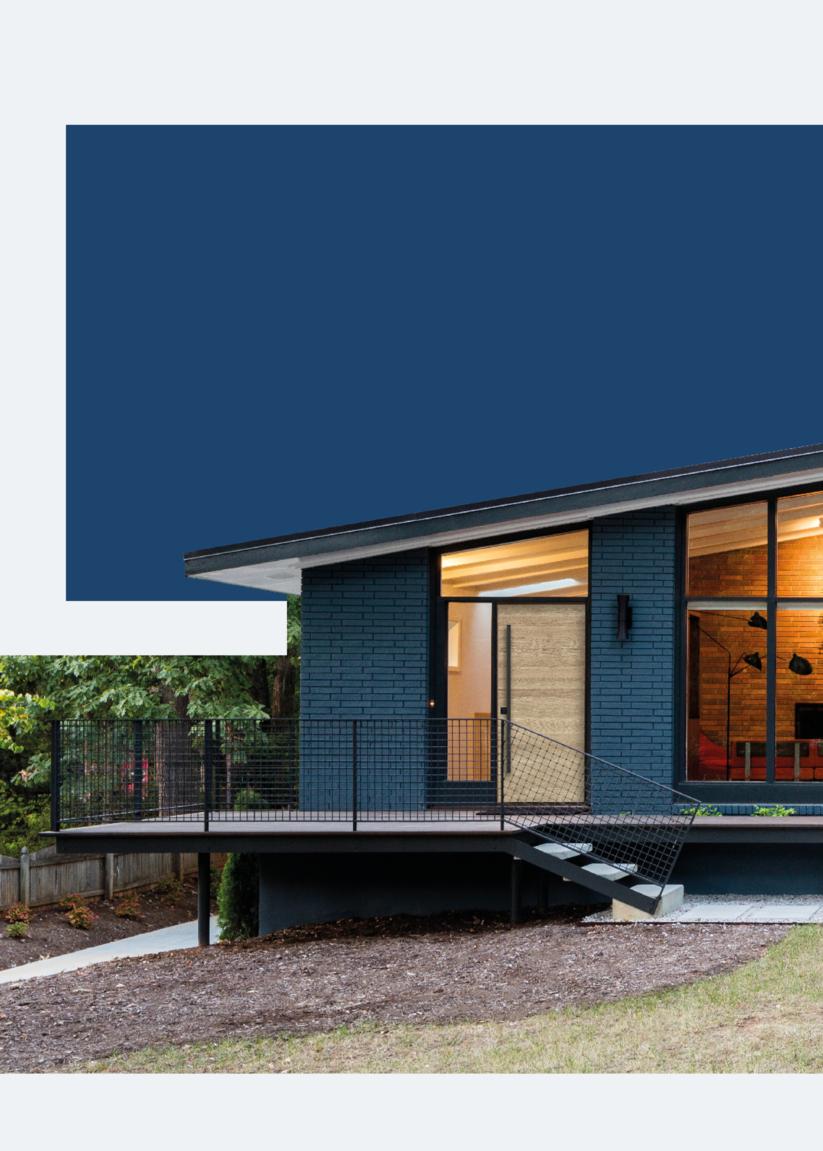
Our Products
We are dedicated to creating high-performance, high-value products that deliver brilliant design, beauty and efficiency to our customers while seeking ways to reduce our impact on the environment.
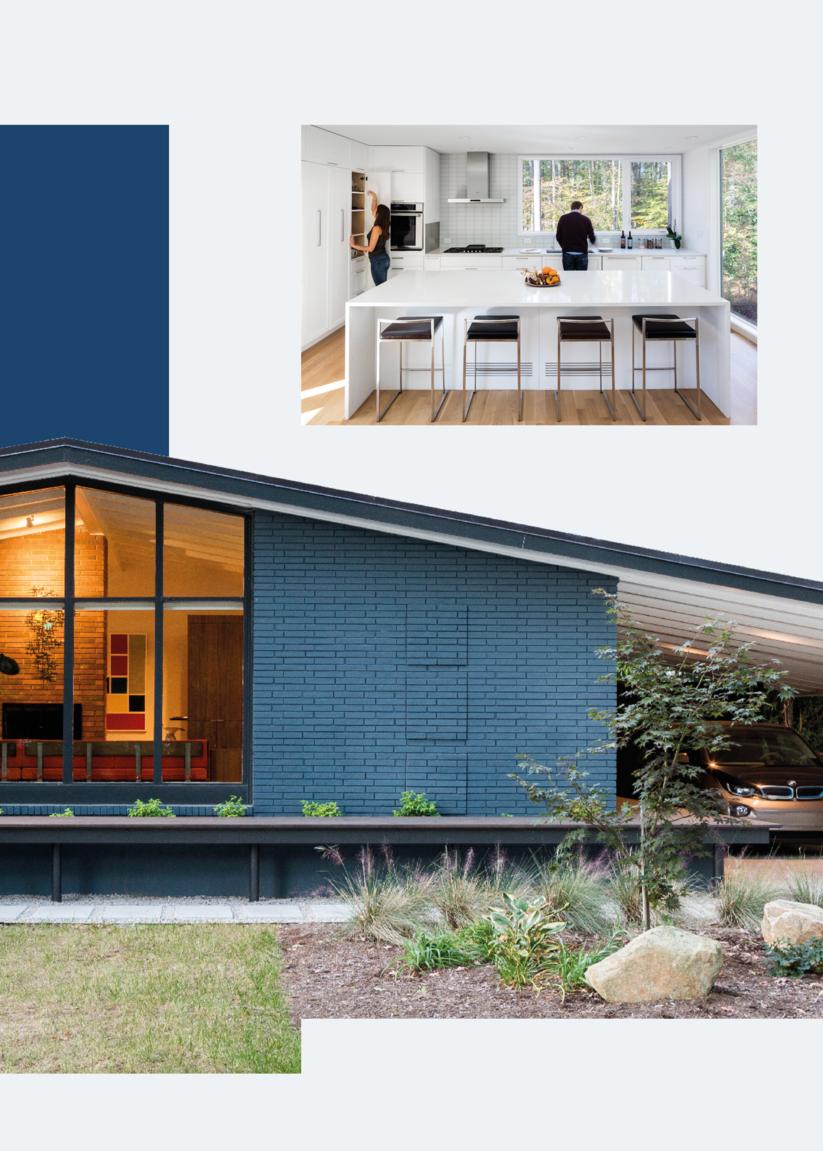
Global Certifications
Certifications
Whether it is a product with a lifetime quality guarantee or one that is certified for high levels of environmental and social responsibility, JELD-WEN has a window and door solution for all.
Our customers turn to us for products that are both high-performance and good for the environment. We are proud that our products contribute to homes and buildings certified for environmental performance and sustainable construction such as the U.S. Green Building Council’s LEED certification and Nordic Swan Ecolabel.
We have been an ENERGY STAR® Partner since 1998. ENERGY STAR® certified JELD-WEN windows and doors exceed the minimum energy efficiency criteria for the relevant climate region. In 2024, 90 percent of our window product lines in North America had an ENERGY STAR® certified option
Our products are also rated by the National Fenestration Rating Council, and we are the first door manufacturer in Scandinavia to be rated bronze-level Cradle to Cradle Certified®
Select products in our portfolio meet the following recognized environmental standards
Cross-European
Forest Stewardship Council™ (FSC™): Multi-Site Certificate

Austria

Scandinavian and Finnish

Programme for the Endorsement of Forest Certification (PEFC): Multi-Site Certificate
France

Germany

Holzforschung Austria: Healthy indoor climate confirmation
EcoVadis Sustainability Rating: Gold level for JELD-WEN France
Cradle to Cradle: Bronze level certification
Byggvarubedömningen:
Sustainability assessment for products for Scandinavian market N

M1 classification: For low-emission indoor products in the Finnish market
North American

Sentinel Haus Institute: Indoor Air Quality Certificate
Forest Stewardship Council® (FSC®): Multi-Site Certificate
ENERGY STAR: Certified products in U.S. and Canada
GREENGUARD Gold:
Products certified for releasing fewer pollutants and creating healthier indoor environments
Sustainable Products
Our Approach
We are dedicated to increasing our sustainable product portfolio with products designed with environmental and social considerations throughout our value chain. Creating products that reduce our end consumers’ emissions from heating and cooling helps our customers reduce their energy consumption and costs as we progress towards our net zero goal. We expect a lot from our products starting with sustainability. Our windows and doors are designed and manufactured to reduce the impact on the environment, maximize energy efficiency and promote a circular economy. At the same time, our customers depend on our products to protect their homes and buildings from the impact of extreme wind and storms and reduce exposure to indoor air pollution. We strive to protect natural resources such as forests and promote a circular economy.
Energy-efficient Products
Helping reduce consumers’ energy consumption while keeping their homes at a comfortable temperature is one of the most impactful ways JELD-WEN can benefit people and the planet. By designing our products for maximum thermal efficiency, we can help make net zero homes and buildings achievable. We have been an ENERGY STAR® partner in the US since 1998, and we are the four-time consecutive winner of ENERGY STAR® Manufacturer of the Year in Canada. In Europe, local legislation and declarations of performance drive products’ energy efficiency.
Actions and Outcomes
Product Highlights
As we design and build long-lasting, sustainable windows and doors, we are focused on creating products that respond better to the changing climate and decrease our impact on the environment and our community.
Energy efficiency: Siteline® Clad-Wood Windows with AuraLast® pine provide builtin protection. The environmentally friendly water-based treatment uses a vacuumpressure process on the wood, creating surface-to-core protection for the windows. The triple-pane windows feature both JELD-WEN SunStable™ Low-E Insulating Glass and SunFlow™ Low-E Insulating Glass, which maximize warmth from the sun while blocking UV rays.
The JWC8500 Series Hybrid window is our most energy-efficient window yet. Available in Canada, this innovative product utilizes state-of-the-art materials and design to provide exceptional thermal performance. Offering up to 22 percent better energy efficiency, the JWC8500 significantly reduces energy consumption for heating and cooling. Efficient windows like the JWC8500 help reduce greenhouse gas emissions and lower energy costs, making them essential in the pursuit of SDGs.

“
Our problem-solving culture empowers everyone to better serve our customers by creating innovative products, focusing on energy efficiency, and delivering to the high standards expected of JELD-WEN.”
John Marchionda SVP, North America Products, JELD-WEN North America
Sustainable Products
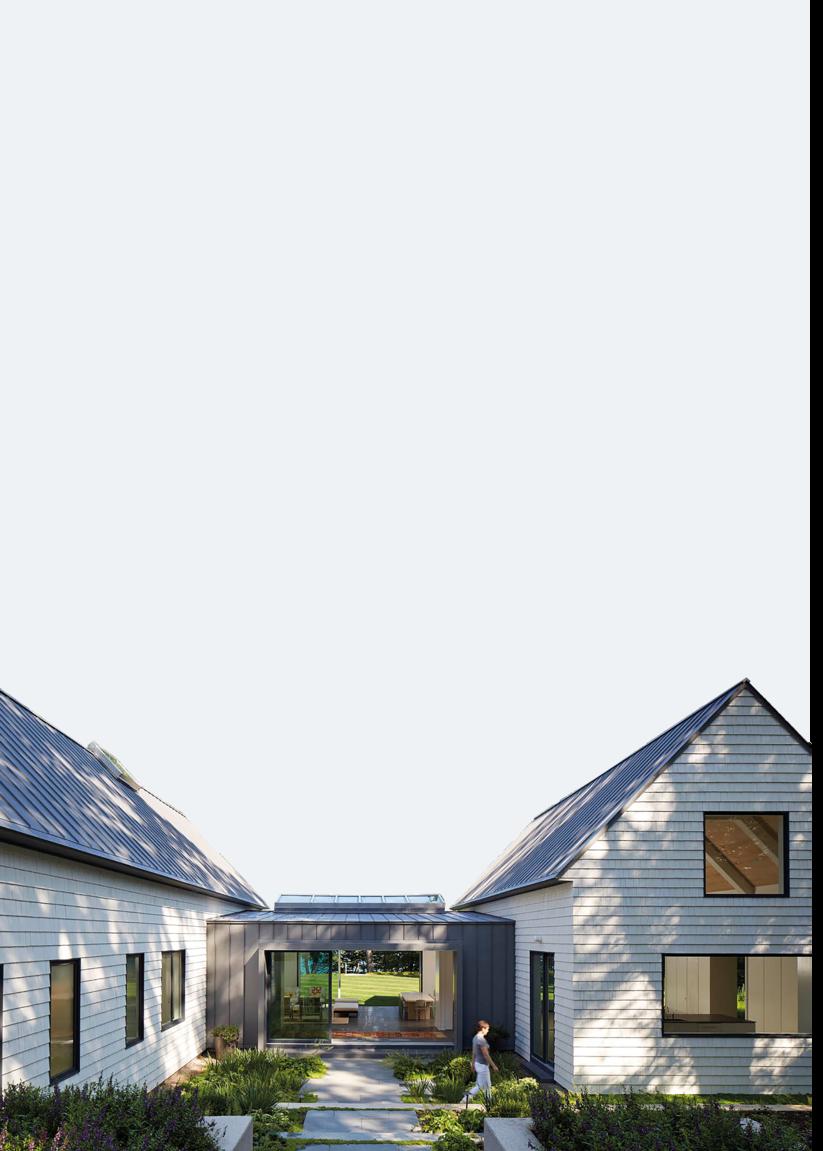
Circular economy: In the first phase of Swedoor’s Cradle to Cradle certification, we have obtained certification for ADVANCE-LINE Stable and Compact interior doors, one of our best-selling products. Cradle to Cradle products are developed to be reusable without losing quality. This promotes a circular economy and requires both designers and engineers to include the product’s entire life cycle, from production and use to reuse, in manufacturing. For more information on Cradle to Cradle see page 39.
Sustainable materials: The doors in our Second NatureTM product line are designed to deliver lasting performance and on-trend style, with minimal environmental impact. The Monroe 2-Panel Flat Molded Interior Door, the Santa Fe 2-Panel Plank Molded Interior Door, and the Authentic Wood 1Panel Shaker Interior Door are durably crafted with recycled wood fiber (including wood waste produced from our own millwork operations) and/or sustainable wood fiber sourced from certified forests High-performing internal components, made with wood chips and scrap, are engineered to resist warping, splitting and cracking, while solid core construction decreases sound transmission between spaces, for a quieter home.
Green design: Our LaCantina Doors incorporate green design for sustainable homes. All LaCantina Doors come standard with dual-paned tempered glass, creating an insulating barrier between the inside and out. Advanced low-e glass options help reduce cooling costs in the summer and heating costs in the winter. And with more glass and light, the LaCantina door system is a good passive heat source and minimizes use of electricity for daytime lighting.
Exceeding energy-efficiency expectations
When Thrive Home Builders designed a luxury mountain retreat that exceeds energy efficiency expectations, they turned to JELD-WEN to bring the Panorama Idea Home to life. JELD-WEN windows and doors provided everything the project required to achieve its goal of carbon neutrality, net zero energy use, indoor comfort and health, and a high degree of resiliency for its harsh Colorado climate.
From the 4-lite Siteline® inswing door, to the French style patio door featuring JELD-WEN’s patented Hydrolock technology, to Siteline Low-Friction Glider Patio doors, all the JELD-WEN products on the exterior of the home contribute to the Panorama Idea Home achieving ENERGY STAR® certification, as well as being a Net Zero Energy home.
Windows designed to stand up to Mother Nature
ImpactGard® protection helps our windows and exterior doors with glass stand up to heavy rain, wind and extreme temperatures. Engineered to withstand strong impacts from wind-borne debris and harsh coastal conditions, ImpactGard features the industry’s leading laminated glass technology. Even if the glass cracks, the fragments will adhere to the interlayer and the shards remain within the frame. Not only can ImpactGard withstand a nine-pound piece of lumber striking it head on at approximately 34 miles per hour, but it also reduces sound transmission, blocks up to 95 percent of harmful UV rays and enhances home security.

Environmental
Environmental stewardship is a key part of who we are at JELD-WEN. We are committed to carrying on this legacy for the next generation by conserving resources, promoting sustainability and building healthier environments.

UN Sustainable Development Goals
Our goals, commitments and key initiatives related to the environment support:
Climate & Energy
Our Goals and Commitments
To reach our goal of net zero GHG emissions by 2050, we aim to reduce direct (Scope 1) and indirect (Scope 2) GHG emissions through efficiency projects, electrification and procuring renewable energy.
Our Approach
Managing Climate Change & Energy
Our commitment to managing climate change starts at the top with the Board of Directors. For more details, see Our ESG Governance
Energy management is central to our efforts to achieve net zero in our operations by 2050. We actively review our energy consumption and identify ways to increase efficiencies. Eight JELD-WEN sites are certified to ISO 50001 Energy Management specifications. This voluntary international standard provides requirements for establishing, managing and improving energy consumption and efficiency.
Our energy-efficient products help make homes and buildings more energy efficient, reducing the emissions associated with heating/cooling homes. We also work to reduce the embodied carbon in our products to minimize the energy required to make a product. For more details, see Sustainable Products and Innovation & Circular Economy
Understanding Climate-related Risks
As climate change poses a growing challenge to business operations, risk assessment and monitoring are increasingly important. We recently completed an update of our physical climate-related risks and scenarios assessment, which will help us better quantify financial impacts and assess mitigation strategies. In addition, ESG risks including physical and transition climate risks, are including in our Enterprise Risk Management (ERM) assessment. For more details about our approach to climate risk management and physical and transition climate change risks, see TCFD Index
Transitioning for Climate Mitigation
We are taking steps to mitigate climate change by measuring and reducing our GHG emissions, implementing renewable energy solutions and pursuing efficiency projects.
Energy Efficiency:
We continue to implement energy efficiency improvements across our facilities, such as installing energyefficient lighting, enhancing building insulation and utilizing energy-efficient equipment.
Renewable Energy:
Our investment in renewable energy sources and biomass boilers is helping reduce our reliance on fossil fuels.
Electrification:
We evaluate equipment, processes and powered industrial trucks (PITs) and vehicles for alternative energy sources that reduce emissions.
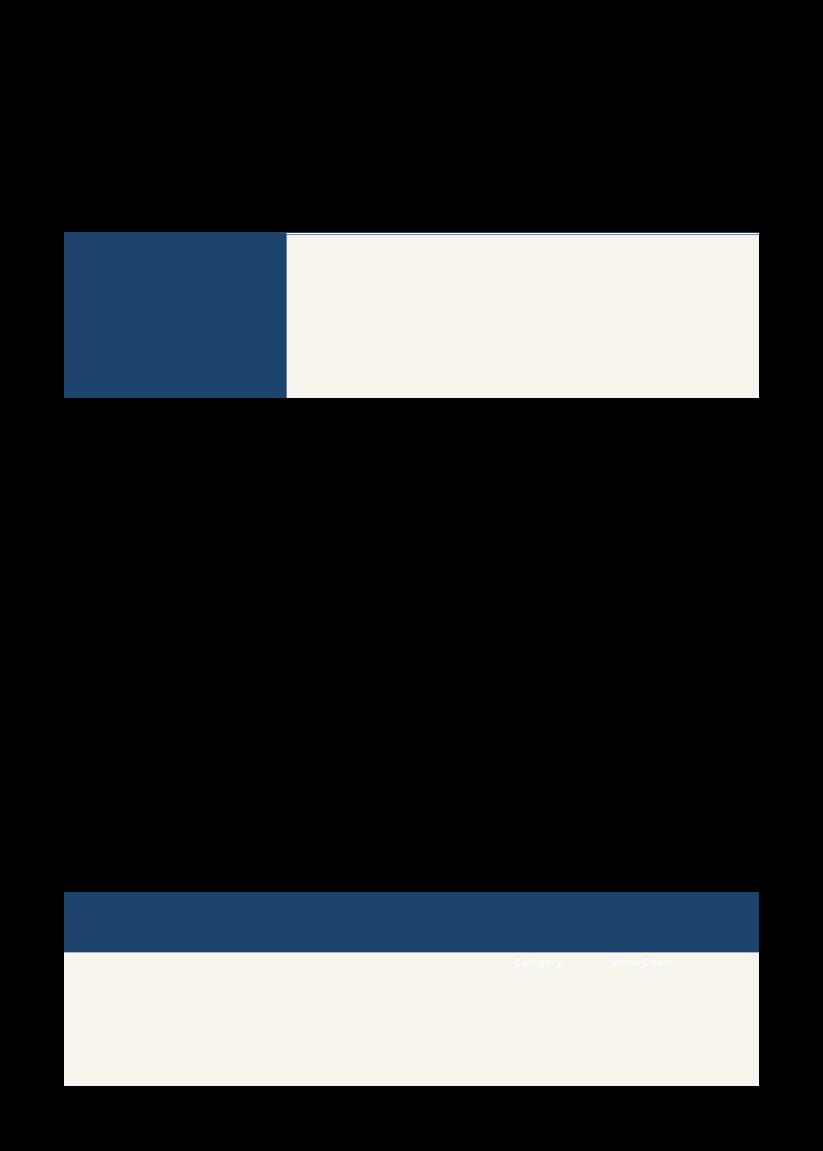
Material Impacts, Risks and Opportunities (IROs)
| 2024: 243,562 (10% improvement)

Actions and Outcomes
Building on the success of Kaizen events held in 2023 and 2024, we are now continuing to share learnings and integrate energy reduction best practices into continuous improvement and engineering events to help achieve our net zero goal.
Lighting
LED lighting installation projects at Dodson, Louisiana; Craigsville, West Virginia; and three Sacramento, California sites are expected to collectively avoid approximately 2,800,000kWh per year and 796 metric tons CO2-e.
Solar Panels
In 2024, JELD-WEN’s facility in Spital, Austria installed a solar PV panel system which will both cut costs from rising electricity prices in Central Europe and reduce GHG from purchased electricity. Solar panels at the site are projected to produce 466,000kWh of electricity per year and cover a portion of the facility’s consumption. The remainder of the site’s electricity has been purchased from renewable sources.
Energy-efficient Equipment
Upgrading to more energy-efficient equipment is also playing a role in our strategy. Our KaronaTM facility in Michigan installed an automated damper control system to control the flow and capacity of dust collection motors. This system, installed in 2024, is expected to save approximately 845,838kWh per year and reduce GHG emissions by 390 metric tons CO2-e per year, a 20 percent reduction in site emissions. Further, the site received $84,584 in one-time rebates from the electricity provider for the energy reduction initiative.
Leak assessment testing and repairs conducted at seven sites in North America in 2024 yielded an avoidance of over 5,800,000kWh of electricity consumption and over $575,000 in savings.
Climate & Energy

Energy Monitoring Creates Change
Our Kuopio, Finland, facility maintains a smart energy monitoring system to assess its equipment’s energy consumption. Prior to 2024, the baseline daily power consumption at the CNC machines was approximately 96 kilowatts (kW). By shifting the load to more efficient CNC machines, the baseline daily power consumption was reduced to approximately 41kW, a 57 percent reduction in electricity consumption.
Measuring Emissions
We currently measure Scope 1 and Scope 2 emissions. We began quantifying Scope 3 emissions in 2023 prioritizing those categories with the largest potential impact and available data as noted in the table at bottom right. In 2024, we began measuring emissions from business travel and intend to add categories in the coming years.
We also measure emission intensity per revenue globally. On a site-level, we measure emission and energy intensity per units produced as product mix and types vary by site.
By investing in renewable energy sources, we can reduce our reliance on fossil fuels. Five facilities in Europe purchased 100 percent of their energy from renewable sources in 2024.
Nineteen of our sites maintain biomass boilers. This alternative, renewable energy solution to a conventional boiler advances our commitment to achieving our net zero goal. 64.5

“
Our goal at JELD-WEN is to make every manufacturing plant as efficient as possible. We are committed to exploring and implementing innovative environmental solutions that will help us achieve a zero-carbon future.”
Carolyn Payne, Director, Global ESG, JELD-WEN
Air Quality
“I’m proud that our in-house paint production contributes to JELD-WEN’s sustainability goals. In addition to cutting cost and increasing product durability, we are also conscientious of what’s good for our own people in terms of safety and health.”
Dale Williams, Coatings Division Plant Manager, JELD-WEN

Our Approach
Reducing Air Emissions
Common sources of air emissions in our facilities include paint, adhesives and glues. Our sites maintain permits to comply with air pollutant and hazardous air pollutant thresholds. Industry best practices and local regulatory laws guide our emission control technology.
Most paint contains volatile organic compounds (VOCs) that deplete the ozone layer. Consequently, reducing VOC emissions from our products and factories is a priority. Four sites in Sweden, Denmark and Finland are reducing VOCs by replacing paints and adhesives in use and implementing best available technology to minimize emissions. Throughout 2024, the sites and our R&D team have been testing paint samples from multiple suppliers to assess quality and performance.
Actions and Outcomes
In 2024, our coatings department in Tukwila, Washington collaborated with the R&D department to develop a formulation for architectural paint for retail customers. The paint, developed and manufactured in house, contains significantly less VOCs — 81 percent less than average. The VOC reduction was achieved by working with polymer suppliers to find polymers with ultra-low or no VOCs. Not only did this initiative reduce VOCs, but it also reduced the cost of paint for JELD-WEN.
Thanks to the efforts of our Dodson, Louisiana team, the facility is no longer considered a major source of hazardous air pollutants (HAPs). The plant was recategorized as an area source after the associated permit renewal/modification was approved in 2024 following successful demonstration of reduced HAP emission rates through performance testing.
Transitioning to a lower VOC primer and efficiency improvements have also resulted in reduced emissions at the facility.
For more details on VOC reduction, see Product Quality & Safety
Water Resources
Our Approach
Reducing water consumption is important, especially in areas of high baseline water stress.
We use water primarily for cleaning during painting and gluing operations, as well as for sanitary and landscaping purposes. In our fiber door skin facilities, we use water for steam production.
Although most of our operations do not require significant amounts of water, we strive to use water responsibly and preserve it where possible. An effective water management strategy must take into account site locations and water stress risk. Consequently, we prioritize facilities for water reduction projects based on their regional water stress risks. In North America, for example, the sites with a high baseline water stress are generally located in the west and southwest including California.
Facilities use the My EHS Platform to report water consumption and source (i.e. public water, groundwater, surface water). We recently completed an update of our physical climate-related risks and scenarios
assessment, which included an assessment of coastal, river and pluvial flood risks and water stress risks. Data tools, including the World Resources Institute (WRI) Water Risk Atlas, help us map our facilities for water stress, water depletion, seasonal and interannual variability, groundwater table decline and flood risk. Results of our most recent climate physical risk assessment9 indicate that in the 2030s, .27 percent of our asset value is at risk from water stress under SSP1_2.6 (low emission scenario) and .23 percent is at risk from water stress under SSP3_7.0 (high-medium emission scenario). Further, 100 percent of our asset value is at a low risk of drought, water stress or fluvial, coastal and pluvial flooding in the 2030s.
For additional information on water risks, see TCFD Index
Actions and Outcomes
Increasing Water Efficiency
Following the success of a 2022 energy and waste Kaizen event, the Rantoul, Illinois plant has continued to prioritize reducing water consumption through efforts such as replacing old or non-working steam traps with new, more efficient traps that require less water for the boiler. These changes, among other water-saving efforts, contributed to a 52 percent decrease in water consumption between 2022 and 2024.
Our LaCantina facility in Oceanside, California is one of our two U.S. facilities located in an ‘extremely high’ baseline water risk area according to the WRI Water Risk Atlas. The site has decreased water consumption by 46 percent from 2022 to 2024 through efforts such as installing low flow regulators on toilets and motion sensors on sinks.
Cradle To Cradle Supports Water Stewardship
Each of our Cradle to Cradle facilities has a site-specific strategy to reduce water consumption through 2026. The strategies were developed after we assessed water quality and quantity issues at our production facilities and in our supply chain and identified key aspects of water stewardship.
We have also evaluated potential water risks for tier 1 suppliers of key materials to Cradle to Cradle sites using the WRI Water Risk Atlas.

46%
decrease in water consumption at the LaCantina Doors site from 2022 to 2024
52%
decrease in water consumption at the Rantoul, Illinois site between 2022 and 2024
Biodiversity & Ecosystems
Our Approach
We call on our employees to act as environmental stewards by reducing our environmental footprint at work and at home, giving new life to our materials, and following environmental laws that apply to our business.
Our Global Wood Sourcing Policy specifically mentions our commitment to maintaining biodiversity. We aim to ensure that the sourcing and production of wood products does not lead to deforestation or the conversion of other natural ecosystems. For more details about our Global Wood Sourcing Policy and goal, see Sustainable Procurement

Impacts, Risks and Opportunities (IROs)
Actions and Outcomes
Assessing Biodiversity Impacts
Understanding our impact on biodiversity in the locations where we operate is the first step towards management and mitigation. To comprehensively assess our biodiversity impacts, we have completed an initial screening of certain facilities using the Integrated Biodiversity Assessment Tool (IBAT). IBAT hosts and maintains data from the following global biodiversity datasets:
– International Union for Conservation of Nature and Natural Resources (IUCN) Red List of Threatened Species
– World Database of Key Biodiversity Areas (KBA)
– UN Environment World Conservation Monitoring Centre World Database on Protected Areas (WDPA)
We intend to use the screening results to determine JELD-WEN sites that are within KBA boundaries and assess potential adverse impacts. For example, our Kissimmee, Florida, facility is adjacent to a freshwater forested/shrub wetland and a freshwater emergent wetland. According to the KBA, it is adjacent to five biodiverse areas within approximately 31 miles or 50 kilometers of the site.

The site follows best practices for pollution prevention and control to protect the wetland environment including daily assessments of parking areas and exterior equipment for trash and dust. For information about how JELD-WEN is promoting sustainable forestry, see Promoting Sustainable Forestry
This Plant is Buzzing!
There is a buzz around JELD-WEN’s HSE site in Humpolec, Czech Republic. But it’s not coming from machinery. It’s coming from the facility’s own beehive.
Bees play an important role in biodiversity and sustaining our environment. Not only do they provide honey and beeswax, but they are also master pollinators, spreading the pollen that allows plants to reproduce. More than 75 percent of global food crops rely on pollinators, according to the World Health Organization10
Andrea Müksch, head of sales & marketing, Czech Republic, landed on the idea of installing the beehive at HSE after considering how to utilize green space at the site and promote sustainability. Müksch reached out to a JELD-WEN retiree who is a beekeeper. With his help, they installed the beehive in 2023. They now hope to add to it and produce their own honey for customers and staff to enjoy.
Environmental Management
Our Approach
The geographic breadth of our facilities and the nature of our operations subject us to extensive environmental, health and safety laws and regulations in jurisdictions throughout the world. We strive for compliance at all times.
At the center of our environmental management efforts is our Environmental, Health & Safety (EH&S) Excellence Program. Its four pillars — People, Prevention, Process and Culture — are key to sustainable operations.
For more details on our EH&S Management System, see Health & Safety We strive for zero reportable releases from all environmental media: air, water and waste. Our environmental management systems are consistent with ISO 14001, which addresses environmental management, and ISO 50001, which addresses energy management.
For more details on our approach to energy management, see Climate & Energy
Our EH&S Assessment Process Audits and assessments are an important part of our EH&S Excellence Program. In North America, our sites use a selfassessment process to evaluate their compliance against national and state environmental and health and safety criteria. Action plans are then created to address gaps or opportunities.

My EHS Platform Improves Efficiencies
Our My EHS Platform is a key tool of the EH&S Excellence Program, helping improve efficiencies and support regulatory compliance across the organization. Launched in 2021, the platform includes sustainability reporting, a safety data sheet (SDS) management system and a compliance calendar.
The SDS management system allows us to digitally manage all safety data sheets for all our products and raw materials. Our sites use the SDS module to maintain a comprehensive list of approved chemicals and a repository of safety data sheets; proposed new chemicals can be added to the system for review in the review hierarchy. SDSs are updated annually in the application, eliminating the reliance on manual updates.
The Compliance Calendar module promotes proactive management processes through the tracking and management of environmental obligations and regulatory requirements. An Action Tracking System allows users to create action items and share them with respective teams to comprehensively manage timely task completion.
Actions and Outcomes
Safety Training
Two new health and safety training courses mark a significant step in strengthening our safety commitment. Introduced in 2023 and fully implemented in 2024, Health and Safety (H&S) 101 is a key enabler of our EH&S transformation to strengthen our foundation by upskilling our workforce through education and training. The five-day, inperson training course lays a solid foundation in health and safety principles, ensuring participants can identify, prevent
5
JELD-WEN sites certified according to the standard ISO 14001 in 2024
2
JELD-WEN sites certified according to eco-management and audit scheme (EMAS)
8
JELD-WEN sites certified according to the standard ISO 50001 in 2024
4
environmental audits completed in 2024, as part of the global EH&S audit program

and respond to workplace hazards effectively. Attendees learn our EH&S Excellence Model, LIFE Critical Safety Rules, SIF prevention, OSHA injury and illness recordkeeping compliance and more. In 2024, 78 team members successfully completed the course.
The EHSMS Education Series, introduced in 2024, builds on EHSMS fundamentals with instruction in leadership commitment; EHS policy roles and responsibilities; document management; hazard identification,
education and training; and operations. To complement the monthly modules, a SharePoint page featured downloadable supplemental forms, materials and presentations.
For more details on our Environmental, Health & Safety Management System (EHSMS), see Health & Safety
Innovation & Circular Economy
(Including Waste)
Our Goals and Commitments
JELD-WEN is committed to reducing waste and minimizing the use of hazardous materials in its operations. Our long-term goal is zero manufacturing waste to landfills by 2050 with all of our manufacturing waste and waste byproducts reused or recycled where possible.
“
By incorporating recycled materials into the plastics we use, we can achieve significant savings, maintain optimal performance and support a circular economy.”
Anthony Quinn, R&D Packaging Manager, JELD-WEN Europe
Our Approach
Ensuring the materials we use remain in the economy for as long as possible is the foundation of our commitment to a circular economy. To achieve this objective, we avoid the use of virgin raw materials wherever possible and look for opportunities to recycle our byproducts and waste streams.
We source raw materials responsibly, managing sustainable practices in our supply chain to minimize our carbon footprint. Our main raw materials consist of wood, glass, metals and hardware.
Our consideration of the recyclability of our products begins in the design phase and extends through the life of the product. We pursue processes that are designed to minimize waste, maximize efficient utilization of materials and conserve resources, including using recycled and reused materials to produce portions of our products
Innovation and excellence are key to JELD-WEN’s long-term success as we continue on our transformation journey. We consider the ESG implications of our approach and are committed to both lowbarrier and high-impact projects.
Material Impacts, Risks and Opportunities (IROs)

For more information on resource inflows and our commitment to sustainable wood sourcing, see Sustainable Procurement
Recycled Materials
As we set our sustainability goals, we seek meaningful goals that we can influence and build a path to achievement. Due to infrastructure and market challenges, we have retired our recycled material goal. However, we will continue to report recycled materials percentages for specific product lines.
Our commitment to prioritize recycled materials in our products remains strong. Through engagement with our suppliers and investment in new technologies, we can continually increase the recycled content of our raw materials. We are focused on materials that have the greatest impact to the environment. In 2024, much of our focus was on plastics and packaging.
Durability
Our products are designed for durability and lasting value. Warranties range based on product lines and may extend up to the products’ lifetime.
| 2024: 42,656 (37% improvement)
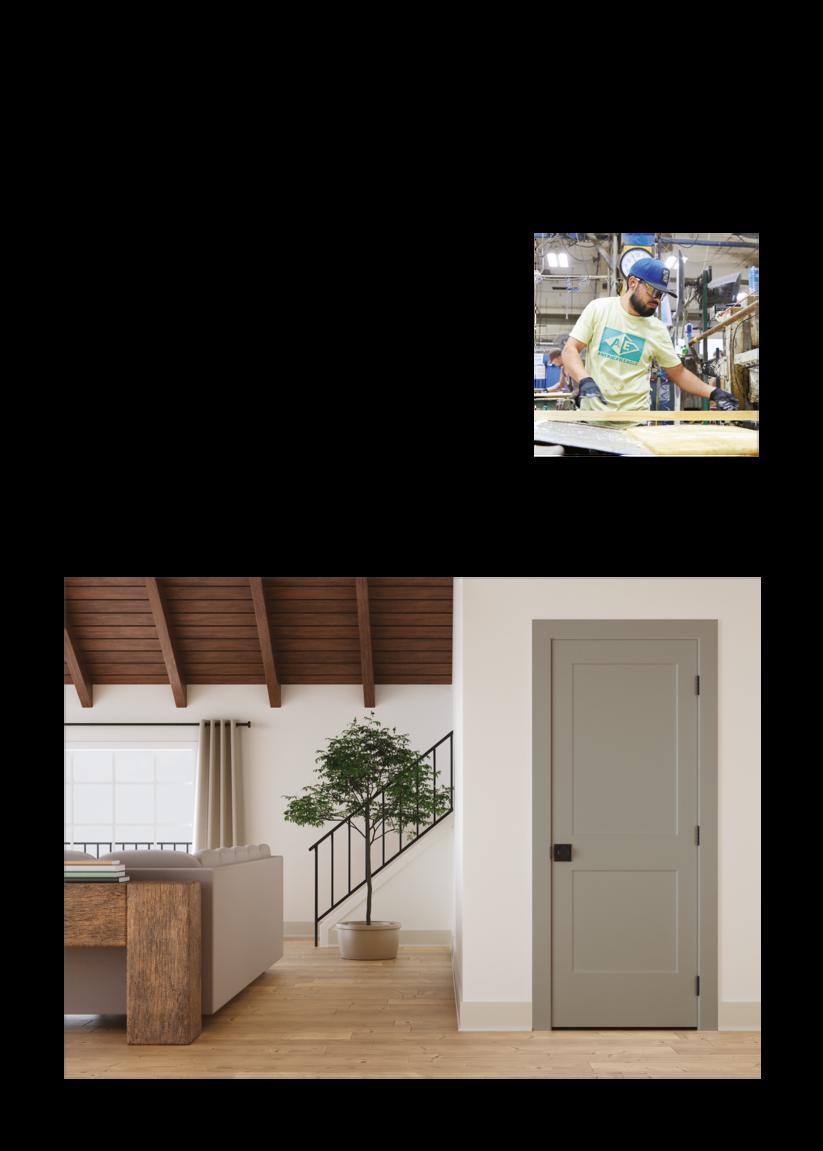
Actions and Outcomes
Environmental Product Declarations for Product Transparency
Sixty-two product-specific Environmental Product Declarations (EPDs) for our product groups in Europe were third-party verified and published as of December 31, 2024. In addition, we have been collaborating with other market stakeholders to contribute to national market EPDs and Life Cycle Analysis (LCA) data for construction products.
To meet the expectations of the European market and increase our coverage, additional product-specific EPDs plan to be published in 2025.
In North America, our team is working with a third party to complete EPDs and facility lifecycle assessments. The first phase of the project is expected to conclude in 2025.
Designing for Decreased Impact
LCA software helps us both minimize the environmental impact of raw material utilized in our door build processes and decrease the impacts of our products at their end of life.
After studying three available disposal methods for our wood doors, our European sustainability team was able to demonstrate the environmental advantages of designing products for reuse. The assessment also identified challenges in the recycling infrastructure for our wooden materials, emphasizing the need for specialized processes to disassemble doors and separate materials effectively. This study can now be referenced when making product design decisions.
Innovation & Circular Economy
(Including Waste)
Continued
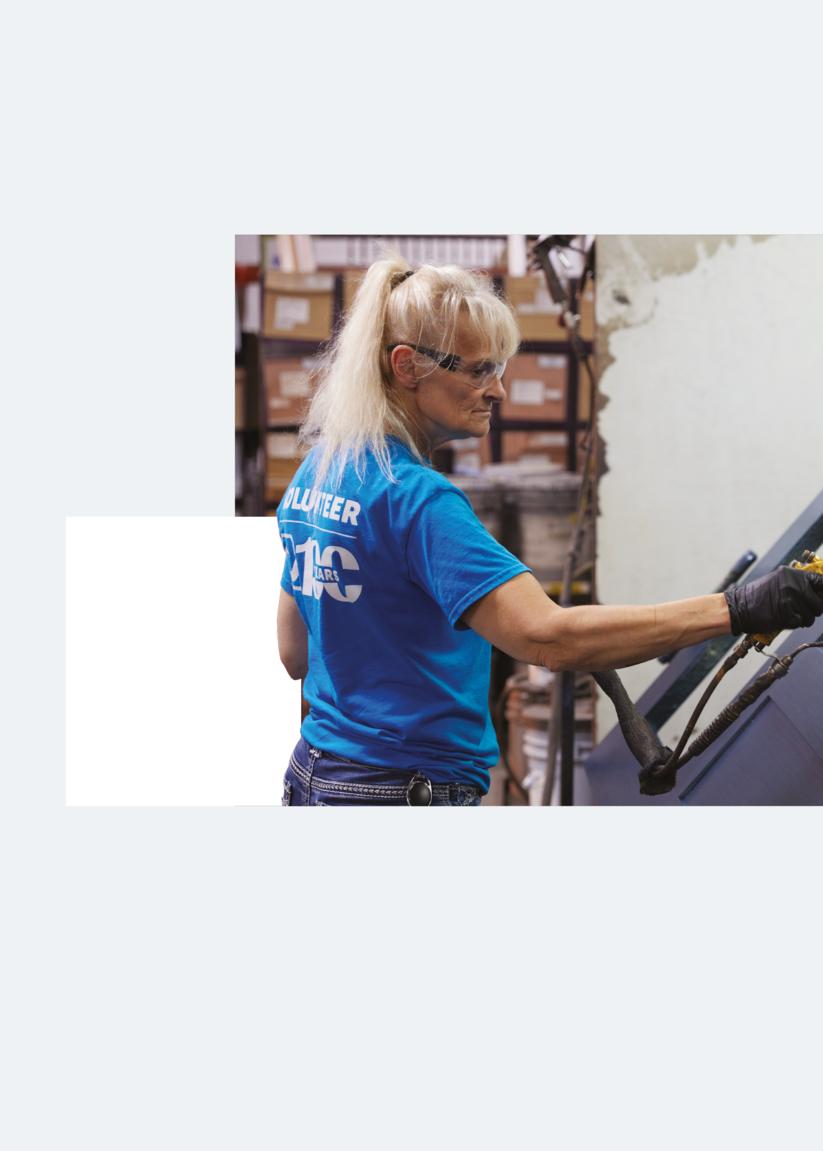
92%
or renewable
95%
Recycled or renewable material
Reusing Fire Doors
In Denmark, Swedoor is participating in a project to test the potential of reusing doors from public buildings. Not only will this initiative make high-quality JELD-WEN reused doors available to eco-conscious consumers, but it also help ensure that fewer doors end up in landfills, as it advances our journey towards circularity and reduced embodied carbon. A partnership with the local fire institute helps to ensure the doors are tested and certified for fire ratings.
Collaborative Projects
Collaboration plays an important role in innovation. We continue to identify partners, including universities, to help us understand the problems we’re trying to solve and contribute to potential solutions. For example, a university partner is helping our Herning facility identify areas where we generate production waste and identify solutions for repurposing materials.
Recycled
material in our fire doors (Penrith, UK)11
in our molded interior doors11 (Pottsville, Pennsylvania)
Sustainable Packaging
Shifting to sustainable packaging is a significant focus in Europe. Led by our R&D Packaging Manager, in 2024 we implemented multiple initiatives to eliminate plastic wherever possible from our packaging. In cases where elimination is not possible, we are moving to materials that contain 30 percent recycled content.
We have successfully migrated some pallet strapping materials at Sheffield and Penrith to 100 percent recycled material made primarily from plastic drinking bottles. Further, the majority of plastic shrink wrap is at least 30 percent recycled content. The same packaging consolidation is also underway in Germany and Hungary to decrease complexities and cost.
Cradle to Cradle Certification Driving Europe ESG Activities
Cradle to Cradle certification is a critical strategy to drive emission reduction efforts as we strive to achieve our 2050 net zero goal. The globally recognized product certification provides a framework to evaluate the safety, circularity and responsibility of materials and products across five categories: material health, product circularity, clean air and climate protection, water and soil stewardship, and social fairness.

In addition to outlining a path to measurable progress toward UN SDGs, Cradle to Cradle certification qualifies for LEED, BREEAM, DGNB and WELL building standard certified buildings.
Cradle to Cradle certification is a process. In 2024, we submitted for bronze-level certification for the Penrith operation in the U.K. and Herning in Denmark. We received certification in early 2025, making us the first door manufacturer in Scandinavia to achieve Cradle to Cradle Certified® status at the bronze level. In addition, we have expanded the certification to four more plants in 2025.
For more details about Cradle to Cradle see Water Resources, Sustainable Products and Sustainable Procurement
Innovation & Circular Economy
(Including Waste)
Continued Waste & Hazardous Materials
Our approach to waste and hazardous materials is based on five pillars: waste reduction, hazardous materials management, product stewardship, compliance, and continuous improvement.
Strict guidelines for the handling and disposal of hazardous materials help ensure the safety of our employees, customers and the environment. Site-level training in waste and hazardous material handling includes employee safety training and legal compliance with regulations governing the handling, storage and disposal of waste and hazardous materials, and risk mitigation programs to identify and address potential risks. We strive to comply with all applicable environmental laws and regulations related to waste and hazardous materials.
By continuously reviewing and improving our waste and hazardous materials management practices we can minimize our environmental impact and protect the health and safety of our employees and communities.
We follow the Environmental Protection Agency’s (EPA) waste hierarchy12 to manage our non-hazardous waste streams.
Our waste management standard, which is posted on our company intranet, guides our activities.
Recycling to Reduce Waste
Recycling is a key strategy to help us achieve our waste reduction goals. In 2024, we diverted13 33 percent of our nonhazardous waste, which corresponds to 77,799 metric tons.
To improve the recycling rates, our sites have developed innovative strategies to increase recycling. For example, our doors facility in Aizkraukle, Latvia, implemented waste walks in 2024 to ensure recyclable waste streams were being sorted correctly. The facility has made significant efforts to find recycling outlets for hard-to-recycle materials such as expanded polystyrene (EPS), which is sent to a third party for use in flooring materials.
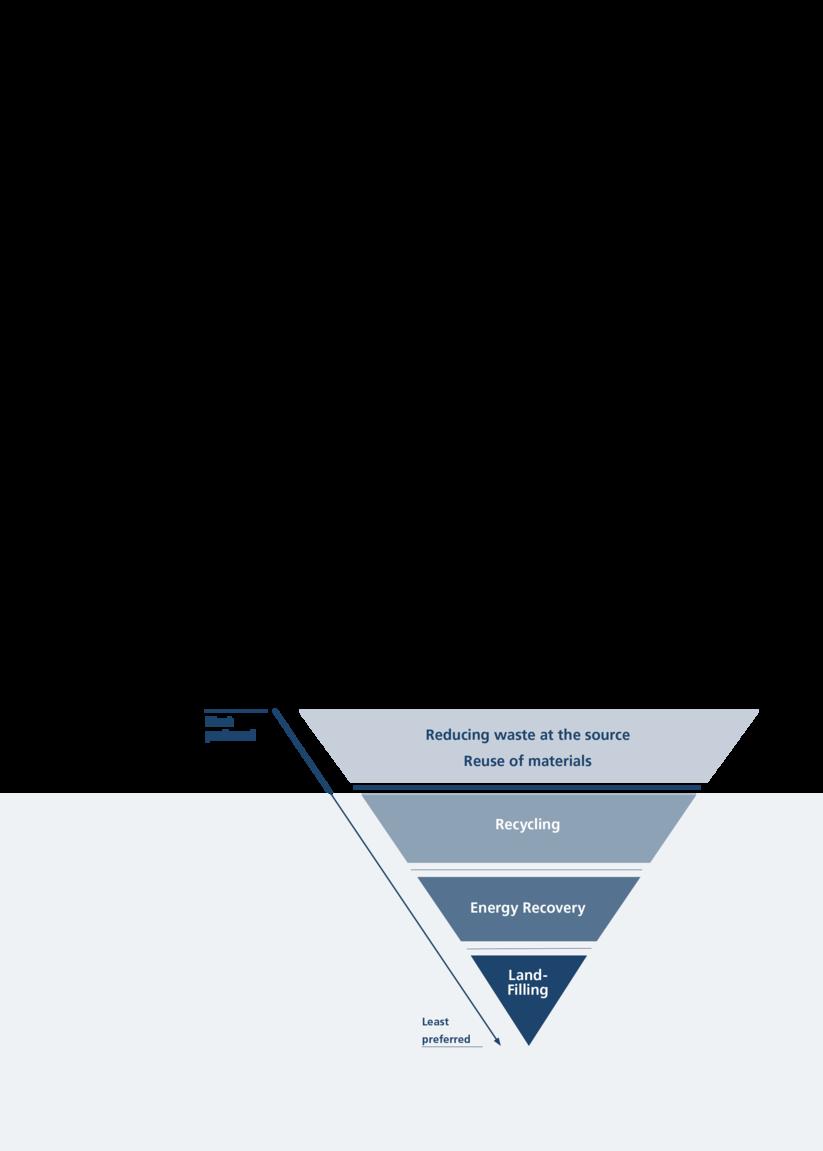
For more details on how JELD-WEN uses recycled material in our products, see Innovation & Circular Economy
Monitoring and measuring our waste We use the My EHS platform to monitor, measure and report on waste streams at all sites. This allows us to track our waste generation, determine areas for improvement and assess the effectiveness of waste reduction strategies. We typically set clear waste management goals, identify different waste streams, establish measurement metrics and implement waste tracking systems. We also train staff, collect and analyze data, conduct waste reviews and implement improvement initiatives.
Waste to landfills varies significantly across our sites in Europe. Overall, only 5 percent of JELD-WEN’s waste in Europe went to landfills in 2024. Nonetheless, we are working to improve this metric. Our Penrith site has achieved zero waste to landfill.
Non-hazardous Waste By Type
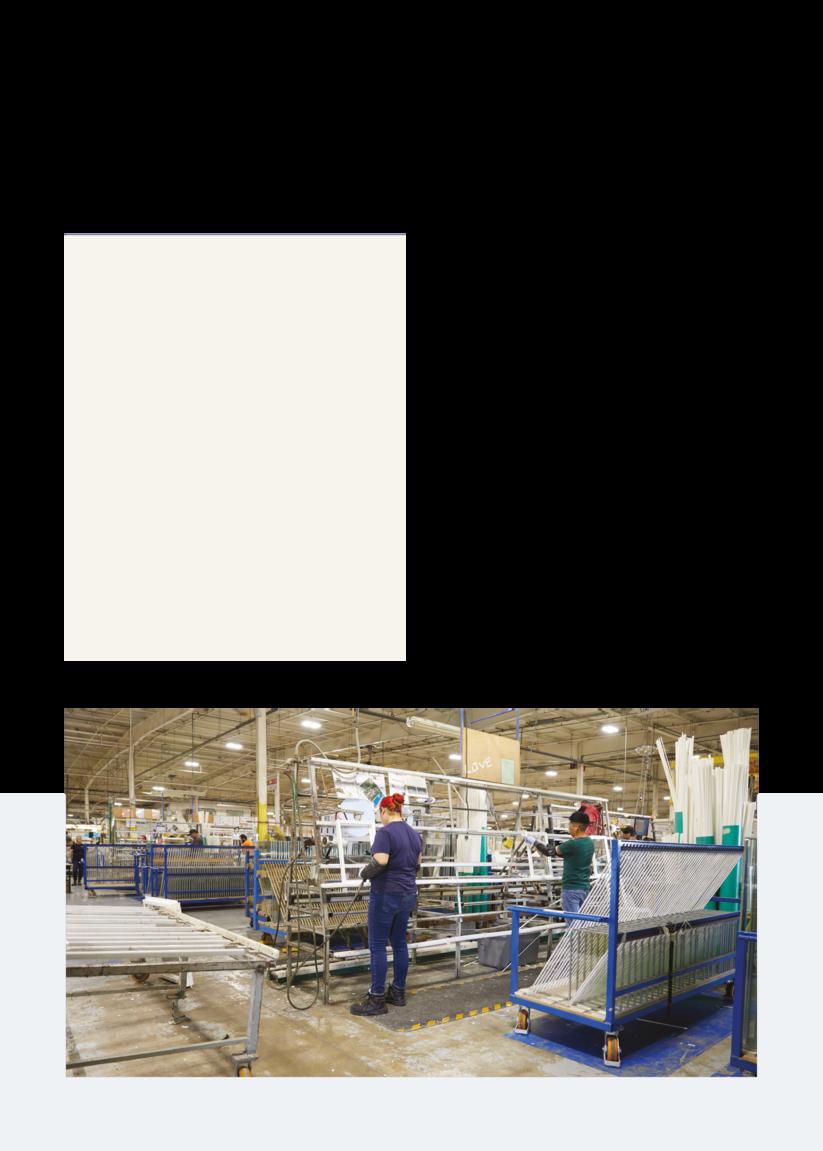
“By separating waste streams at the source and partnering with the right recycling outlets, we not only reduce landfill impact but also recover value from what would otherwise be discarded. It’s a smart, responsible way to lower our environmental footprint and lead by example in sustainable manufacturing.”
Reinis Nedvis, Aizkraukle Doors Plant Manager, JELD-WEN Europe
n Disposal – landfill 18%
n Disposal – incineration with energy recovery 47%
n Disposal – incineration without energy recovery 1%
n Diverted – recycling 33%
¡ Diverted – reused 0.0%

Social
Our commitment to invest in people focuses on employee training and development programs, training leaders for success, and fostering a sense of belonging — a legacy carried from our small, family-owned roots to our global operations.
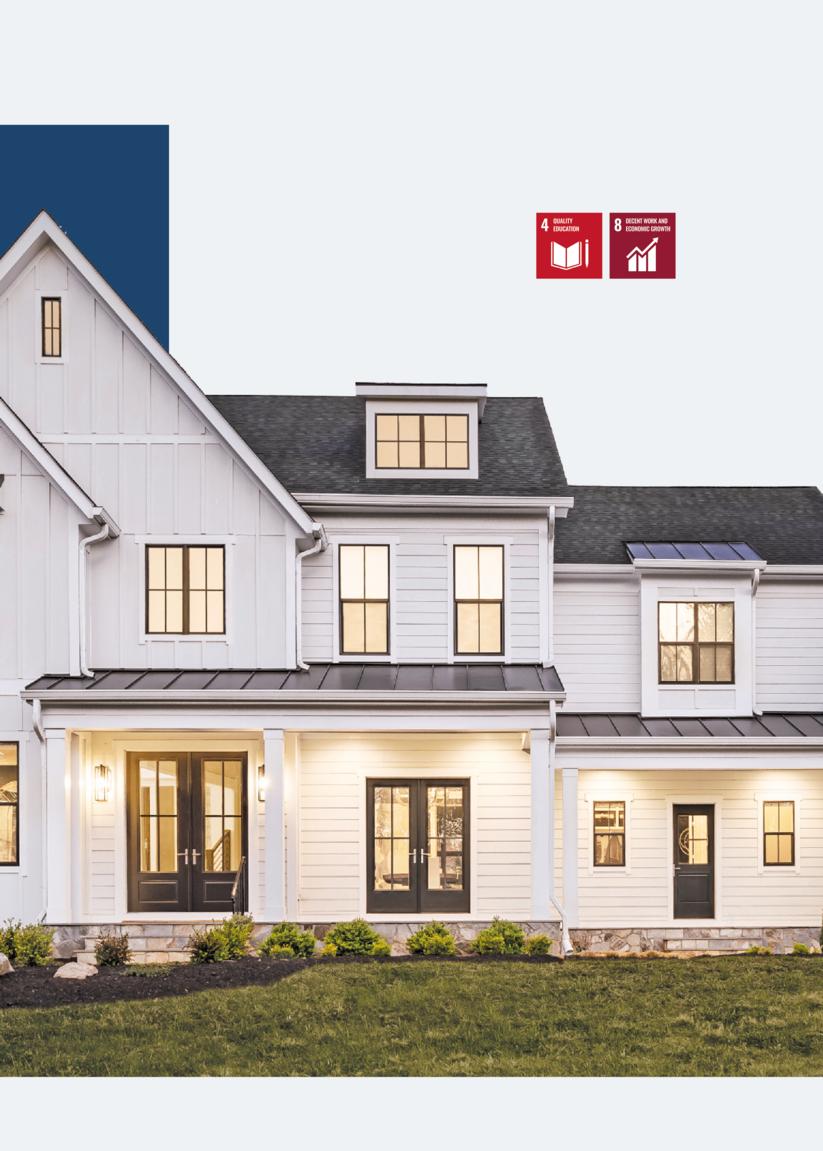
UN Sustainable Development Goals
Our goals, commitments and key initiatives related to Social support:
Health & Safety
Our Goals and Commitments

“Safety is more than just a priority; it’s a belief that defines how we operate and treat one another. At JELD-WEN, safety isn’t limited to our plants or offices. It’s a mindset that extends to every corner of our operations, including remote workplaces.”
Gustavo Vianna, EVP and President, JELD-WEN Europe
Prioritizing health and safety is not just a regulatory requirement, it’s a core JELD-WEN value. Recognizing its importance, we set a goal in 2024 to achieve a total recordable incident rate of less than 1.0 by 2030. 5%
reduction in lost time injury rate in 2024 compared to 2023
Our Approach
| 2024: 3.13
JELD-WEN’s primary focus is on the prevention of Serious Injuries and Fatalities (SIFs) through the development and implementation of our 12 Living Injury Free Everyday (L.I.F.E.) critical rules standards as well as our injury reduction strategy.
We monitor our performance as we drive towards continuous improvement by implementing and evaluating leading and lagging indicators, performance metrics and injury trends.
In recognition of our belief that nothing takes precedence over safety, in 2024 we added Total Recordable Incident Rate (TRIR) to our global ESG goals. However it’s important to note that our individual sites have always maintained site-specific TRIR targets.
For more details on our progress over time, see Health & Safety table and Health & Safety Performance below.
Health & Safety performance
In 2024, we saw an improvement in our Lost Time Injury Rate (LTIR), which decreased by 5 percent compared to 2023.
Material Impacts, Risks and Opportunities (IROs)
Subtopic IROs
Employee
Incidents resulting from inadequate
and management at JELD-WEN plants
Commercial risk linked to inability of staff to
Operational risk due to inadequate security in facilities
However, our TRIR increased by 3 percent, and our SIF rate increased by 13 percent in 2024 compared to 2023. We recognize that we still have more work to do in this area. To make progress toward our new TRIR goal, we have made process improvements including implementing a pre-start safety review process and modifying the risk assessment process. Potential SIFs are reported in our system and distributed through learnings to our sites.
We are seeing some progress in leading metrics. We saw a 49 percent reduction in potential SIFs from 2022 to 2024 and a 16 percent increase in the number of safety observations reported in 2024 compared to 2023. Reporting and tracking of near misses helps us improve safety programs and practices to prevent SIFs and other work-related injuries. In 2024, we reported 273 near misses in North America and 67 in Europe.
The rate of fatalities as a result of workrelated injury was zero in 2024.
Policies
Our EH&S Policy Statement and an EHS Management System (EHSMS) provide a framework and structured approach to managing EHS risks and opportunities for continuous improvement.
Further, we maintain a robust suite of global EHS standards including hazardous communication, personal protective equipment (PPE), control of hazardous energy, etc.
Environmental, Health & Safety Management System (EHSMS) JELD-WEN demonstrates our commitment to L.I.F.E. by implementing processes that support our strategy, embedding EH&S into everything we do to prevent injuries. We are creating a culture where EH&S is valued and associates are equipped with the appropriate functional and technical skills to help prevent injuries and ensure compliance.
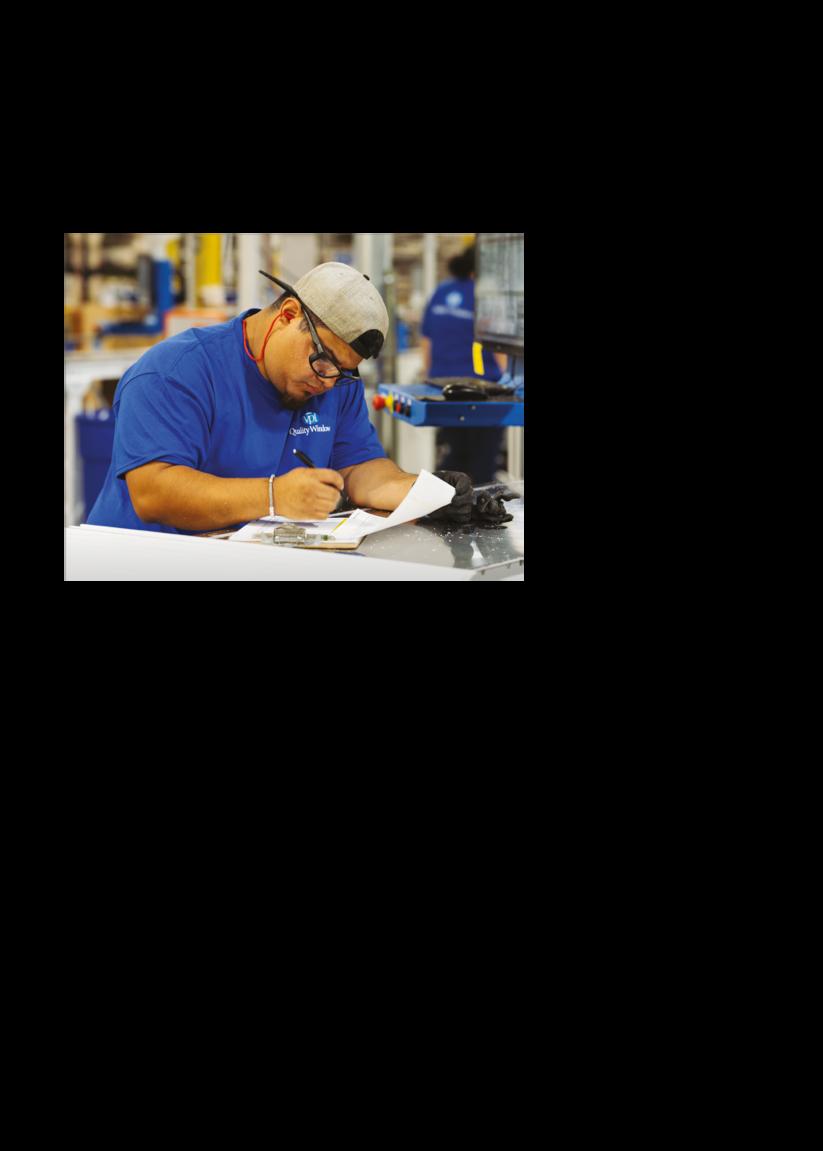
We proactively implement our management systems consistent with ISO 14001 and ISO 45001 requirements to minimize EH&S risks and to create a strong safety culture and improve performance.
Implemented across all JELD-WEN facilities, our EHSMS provides a foundation to help maintain legal compliance and mitigate serious injuries and fatalities and environmental risks. Our EH&S Excellence Model and our EHSMS provide the framework to enable our vision of zero injuries and illnesses, zero spills and releases, and zero fines or penalties.
We use the hierarchy of controls to reduce risk and eliminate work-related hazards14 For more details, see Hierarchy of Controls graphic on page 46.
Governance
Structure
Our EH&S Governance process includes our Global EH&S Leadership Council, which was created in 2023. Led by our Vice President, Global Environmental, Health & Safety, the council is comprised of senior functional leaders and the directors of EH&S from across our business who meet regularly to review our EH&S performance, plans and goals.
Our EH&S practices are periodically reviewed by the Global EH&S Leadership Council, as well our management and Board of Directors, to address ongoing effectiveness and compliance. Our governance process also includes ongoing development and implementation of our EH&S policies, such as the Global EH&S Policy and Global EH&S Standards.
Global standards for L.I.F.E. Critical Safety Rules were developed by the Global EH&S Standards Governance Council and introduced to the Global EH&S Leadership Council in 2023.
Through our global EH&S audit program, our internal auditors assess site implementation of our EHSMS and compliance with regulatory requirements and our Global EH&S policies and standards. In 2024, we conducted four EH&S audits at our sites in North America and Europe.
Health & Safety
“At JELD-WEN, a safe workplace is more than a requirement — it’s a commitment that means putting our associates’ health and wellness first and engaging every individual to work safely and responsibly.”
Simon Greenfield, Vice President, Global Environmental, Health & Safety, JELD-WEN
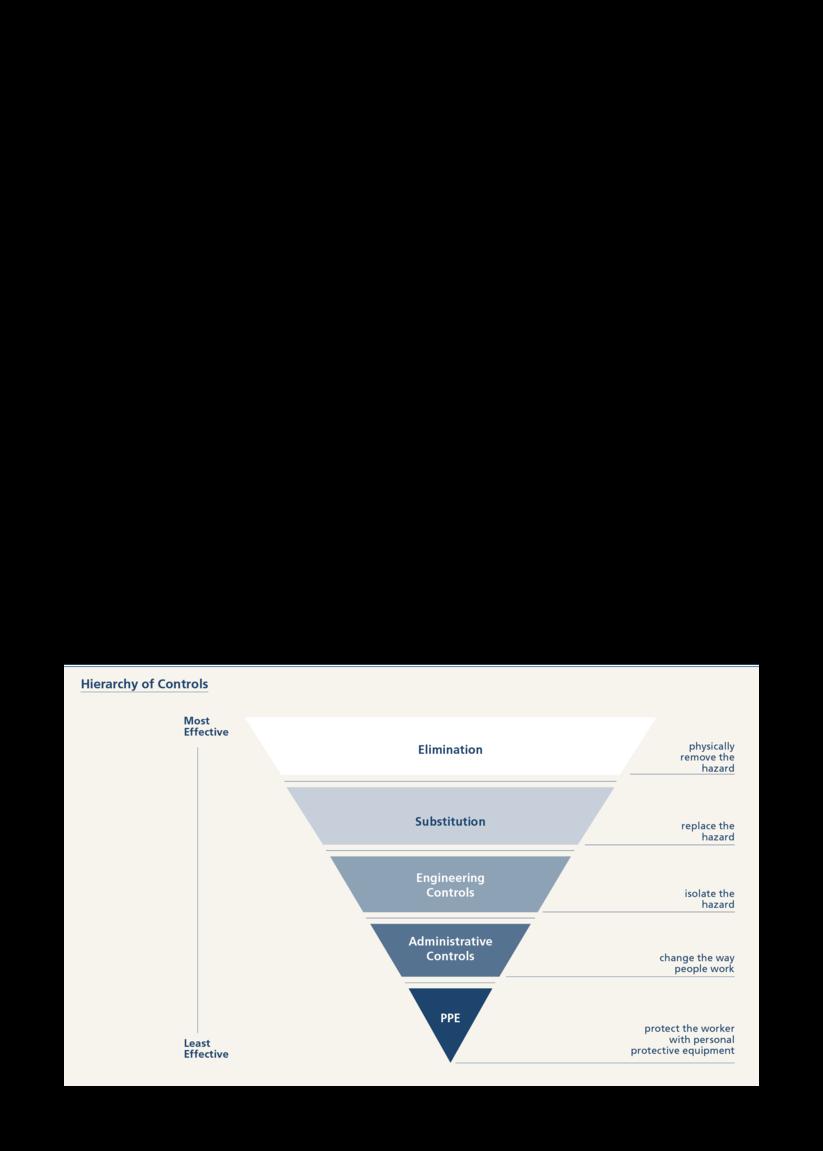
Actions and Outcomes
Training and Awareness
Together, safety awareness, training and communication help us improve safety. Globally, employees have been trained on our L.I.F.E. Critical Safety Rules and we continually train delegates on our Taproot™ Incident Investigation methodology, which allows us to identify causal factors and multiple root causes of serious and potentially serious incidents. Health and Safety 101 sessions provide another layer of training, teaching participants how to identify, prevent and respond to workplace hazards.
We communicate our health and safety policies and messages to our associates through multiple channels including our internal network, via posters and banners and through communication with function leaders.
To ensure a year-round focus on EH&S, we have replaced our annual Safety Month with Quarterly Safety Spotlights.
Launched in the second quarter of 2024, each Spotlight features activities centered on relevant EH&S topics and our 12 L.I.F.E. Critical Safety Rules.
For more details, see Safety Training in Environmental Management
Safety Gets an Assist From AI
Our Penrith team is leveraging AI to prevent accidents. JELD-WEN has installed True AI cameras to detect human presence around forklifts in specific areas. If a pedestrian enters a defined area, or a driver steps out of a truck cab, nearby forklift operators receive visual and audible warnings through the forklift central unit and the forklift will initiate an automatic speed reduction and safe stop.
Fit for Work
Strains and sprains are among the top generators of SIFs and recordable injuries at JELD-WEN. Our Fit for Work initiative is designed to reduce the risk of ergonomic injury through early intervention and risk assessment.
Fit for Work assists sites in identifying ergonomic risk, developing task-specific stretching and job coaching on proper body mechanics, as well as musculoskeletal first aid and wellness programs. A risk assessment analysis prioritizes sites and tasks that have caused or may cause sprains/ strains injuries.
Through 2024, Fit for Work was engaged at 17 JELD-WEN North America facilities, and additional facilities are planned for 2025. A total of 24 identified improvements were completed as of December 31, 2024.
Ergonomic Risk
We assess ergonomic risk with the goal of reducing the risk of injuries associated with manual handling. After prioritizing sites and tasks that have caused, or may cause, sprains/strains injuries, we deploy Human Tech software which uses AI technology to video operational tasks and identify ergonomic risk factors and risk rank tasks. We then develop and implement plans to reduce the manual handling risk of injury.
Wearable Technology Revolutionizes Workplace Safety
When employees at our Best of Steel (BOS) plant in Germany struggled with the physically demanding task of handling large metal sheets in the laser cutting area, the site looked for a solution that would alleviate potential joint pain and bring innovation to the plant floor at the same time. The answer: exoskeleton technology that stabilizes the back and assists employees in lifting loads.
Wearable exoskeleton devices were implemented in late 2023, with training sessions held in early 2024 for BOS employees. The exoskeleton devices are important for both the company and employee health, helping our associates to prevent injuries and remain healthy and serving as a tangible demonstration of JELD-WEN’s commitment to employee health and well being.
Associate Wellbeing
Our human resources leadership and benefits team work to enhance JELD-WEN’s culture of wellbeing across all areas of our business.

In addition to regular awareness and engagement activities, we offer training, support and regular content published on our company intranet, addressing topics such as mindfulness, stress reduction, heart health and exercise at home.
Our Employee Assistance Program offers voluntary, free and confidential counseling, legal and financial consultation, work-life assistance and crisis intervention services to all associates and their household family members. Resource articles to help associates boost their emotional, physical and mental wellbeing are circulated through internal newsletters.
To help support our associates’ wellbeing and safety when they travel, JELD-WEN Global Security has partnered with United HealthCare and the U.S. Department of State to provide timely, comprehensive travel security guidance for business and personal travel via WorldWatch
Talent Attraction, Development & Retention
“Our goal is to continue to foster an inclusive, values-based culture that has a positive impact on our people, our customers, and our communities.”
Wendy Livingston, EVP & Chief Human Resources Officer

Our Approach
A world-class company starts with a worldclass team. We aim to attract, retain and continually develop great talent. We invest in formal leadership development programs that help prepare senior leaders for succession into executive roles, in regional programs to accelerate the leadership conversion of mid-level managers, and in focused efforts to upskill our front-line leaders.
Actions and Outcomes
Recruitment
Our hiring process is designed to ensure we reflect the diversity of local talent pools and our customer base as we strive to create an environment where every individual can reach their full potential.
Employee Benefits
JELD-WEN provides a comprehensive benefits package designed to support the health and welfare of our employees and their families. Our benefits generally include medical and dental insurance, comprehensive leave policies and access to an Employee Assistance Program. Additionally, employees have the opportunity to participate in company benefit plans for savings, tuition reimbursement and discounts.
Change Agent Network
Transforming our company and culture is a complex, multi-year journey. Key to this change are about 250 JELD-WEN employees dedicated to enhancing culture, performance and business value. As part of JELD-WEN’s ALL IN Transformation, in 2024 the Change Agent Network focused on promoting values awareness and adoption at the production level. An idea book shared various cultural improvement initiatives based on JELD-WEN’s values.
Material Impacts, Risks and Opportunities (IROs)
Associate Development
Our commitment to employee development encompasses diverse training initiatives focused on leadership, change management and technical skills. Beyond traditional classroom settings, we utilize on-the-job mentorship to enhance learning experiences effectively. Additionally, our global Learning Management System (LMS) platform offers online learning opportunities in multiple local languages to employees with computer access. The platform includes thousands of courses covering areas such as functional health and safety, skill development and softer competencies like inclusive leadership. In 2024, we implemented Leader Alignment training aimed to standardize leadership skills globally. This training facilitated the implementation of our competency model, reinforcing our values and establishing a comprehensive pathway for capability building. More than 1,300 leaders worldwide participated in 109 in-person and virtual sessions. Following the program, 90 percent of participants reported a better understanding of JELD-WEN’s values and how to exemplify them, while 88 percent felt that they acquired skills to enhance their leadership capabilities.
In 2024, we also introduced training and learning initiatives intended to support capability building for all employees, especially those at the production level. These monthly training segments allowed plant managers to blend values messaging with capability and skill enhancement.
Internal Mobility
JELD-WEN focuses on developing our employees to prepare them for future roles within the company. In 2024, 34 percent of executive, professional, and management positions15 were filled by internal candidates.
Early Career Programs
Our Early Career Programs aim to build a qualified diverse talent pipeline, develop early career talent through varied experiences, and establish JELD-WEN as the preferred employer for early career professionals.
Internships and Apprenticeships
JELD-WEN focuses on developing young professionals who will continue to strengthen the manufacturing industry. Our U.S. internship program offers a 10-week experience in engineering, finance, human resources, IT, marketing, or operations. In Europe, apprenticeships last up to five years, tailored to each country’s training needs, preparing professionals for success.
Measuring Employee Performance Employees receive an annual performance review, with processes tailored according

to the specific region of each local plant. Performance tracking is conducted through our HR system for those in executive, management, professional and support career tracks. These employees engage in JELD-WEN’s Performance Management Program — a collaborative initiative aimed at enhancing employee performance throughout the year and pinpointing growth and development opportunities. The program encompasses three primary phases: performance evaluation, goal setting, and development planning. Employees within the support, manager, professional, and executive categories participated in the 2024 performance management process. Additionally, production associates have a distinct, customized review process designed to foster their development and growth. The performance review process for the company’s executive officers is described in our 2025 Proxy Statement
Measuring Engagement
In 2024, we surveyed our employees to measure progress in our values-based culture. We received 11,598 responses and had a response rate of 71 percent. Leveraging responses in the 2023 survey, we took action to enhance trust and transparency by implementing senior leader initiatives supported by the Change Agent Network. Based on results, we created a cultural roadmap for 2025’s strategic priorities.
Diversity, Equity & Inclusion
Our Approach
Diversity, Equity & Inclusion (DE&I) is key to our global culture and driven by five values: build businesses ethically and safely, invest in people, inspire customers through innovation, deliver on our promises, and improve every day. At the highest level, we are committed to:
– Demonstrating leadership commitment and accountability that fosters an inclusive culture, allowing associates to feel connected to JELD-WEN’s purpose and values while enabling them to reach their full potential
– Building and maintaining a qualified diverse talent pipeline that creates a highperforming workforce representative of the markets where JELD-WEN operates
– Promoting a diverse supplier ecosystem that drives competitiveness and innovation
JELD-WEN values an engaged workforce for a competitive edge. We encourage diverse contributions, authentic discussions and challenging the status quo. Our leaders promote these aims and support mentoring programs, ERGs and an open-door policy for sharing ideas and concerns about company culture and strategy.
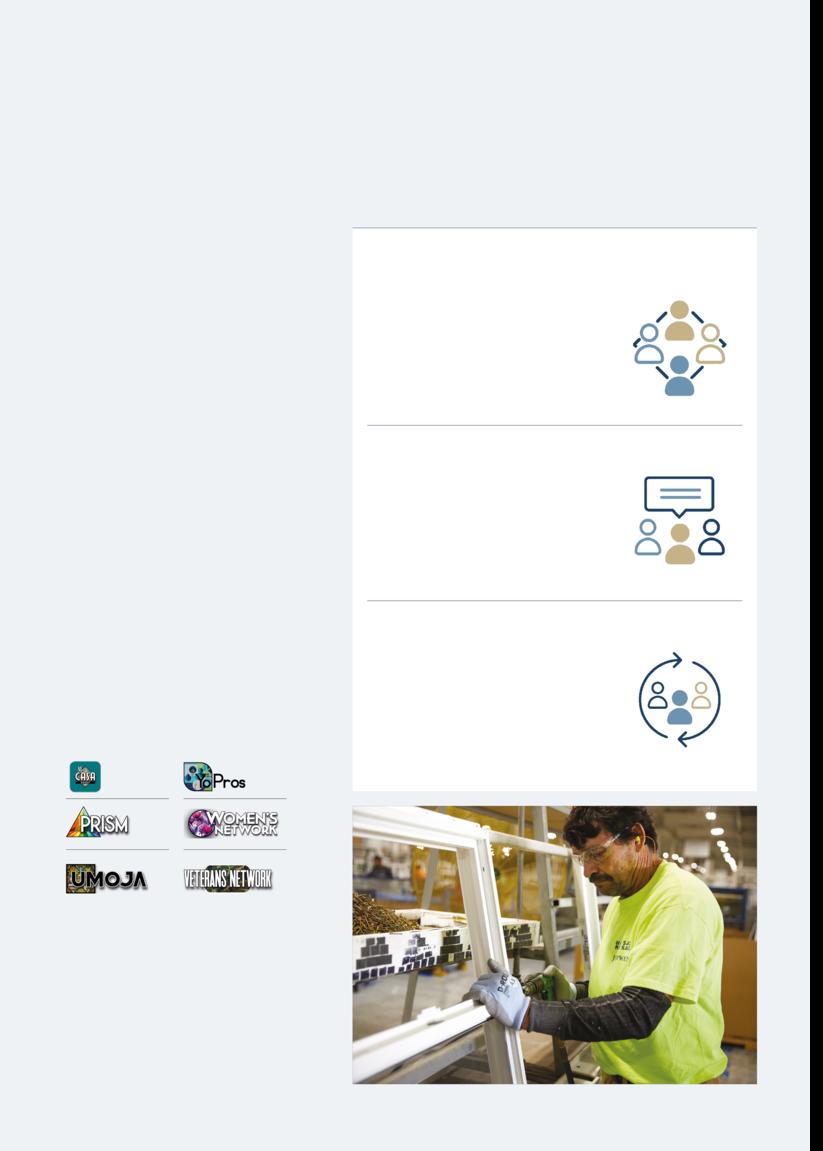
We define Diversity, Equity & Inclusion as follows:
Diversity
Our diverse associates, suppliers and customers bring unique perspectives and ideas. We aim to help our leaders and associates appreciate these differences as our organization grows.
Equity
Proportional representation focuses on fairness. Equity acknowledges that everyone starts from different points in life, society, education or career. At JELD-WEN, we aim to understand the necessary access or accommodations to ensure equity across teams and individuals.
Inclusion
Creating an environment that is respectful, collaborative and supportive encourages the participation and belonging of all associates. Developing an inclusive environment requires conscious effort and consideration from everyone involved. It is important to ensure all voices are heard, ideas are shared, and associates are valued.

Actions and Outcomes
We commit to DE&I from recruitment through our associates’ career journeys.
Employee Resource Groups
Our six ERGs represent our diverse workforce and are vital to our ALL IN transformation. They promote inclusion and awareness, ensuring all employees are heard, celebrated and supported. ERGs foster communication and sharing, helping us value the benefits of diversity.
Recruiting Diverse talent
As an equal-opportunity employer, JELD-WEN is committed to attracting and hiring qualified candidates with diverse backgrounds for all positions across the company, from entry-level roles to senior positions. Our recruitment strategy emphasizes cognitive diversity.
We believe that recruiting and retaining qualified diverse talent early in their professional careers is essential for fostering an inclusive environment. In North America, we actively recruit from colleges and universities including Minority Serving Institutions such as Historically Black Colleges and Universities (HBCUs) and Hispanic Serving Institutions. In Europe our focus is on trade schools and work-study programs. Encouraging women to pursue manufacturing careers is also a priority. We recruit from regional women’s colleges and collaborate with universities in Germany and Denmark on apprenticeship programs to support female students in exploring manufacturing careers.
We are dedicated to increasing gender diversity within our bonus-eligible positions, which represent the most senior positions in the organization.
“ I believe diverse perspectives always get an organization to the best outcome. With differing view points, you are working to solve things and look at problems from alternative angles.”
Bill Christensen, CEO, JELD-WEN
Diversity, Equity & Inclusion
Continued

Pay equity
Equitable practices are essential for an inclusive environment. We aim to provide equal pay for equal work, based on skills and accountability, not gender or race.
JELD-WEN evaluates internal pay equity annually to help ensure workplace equity and fair compensation. Market salary range reviews are designed to maintain competitiveness, while internal pay reviews are designed to ensure equitable compensation across different jobs.
DE&I Training
Employees have access to over 400 DE&I courses in more than 17 languages on the LMS platform. Unconscious bias training is provided, and in Europe, the talent acquisition team trains hiring managers in diverse recruitment principles.
Demographics
As an organization, we believe reflecting our markets and customers in our workforce is important to delivering the right services and products. We consider gender on a global scale and focus our ethnicity metrics on U.S. data only, which shows that in the U.S., 35 percent of our workforce is ethnically diverse1
2024
employees Board of Directors
Board of Directors Executives
Gender Diversity Metrics
2024 Gender by Region
America Europe
Female Representation
Community Engagement
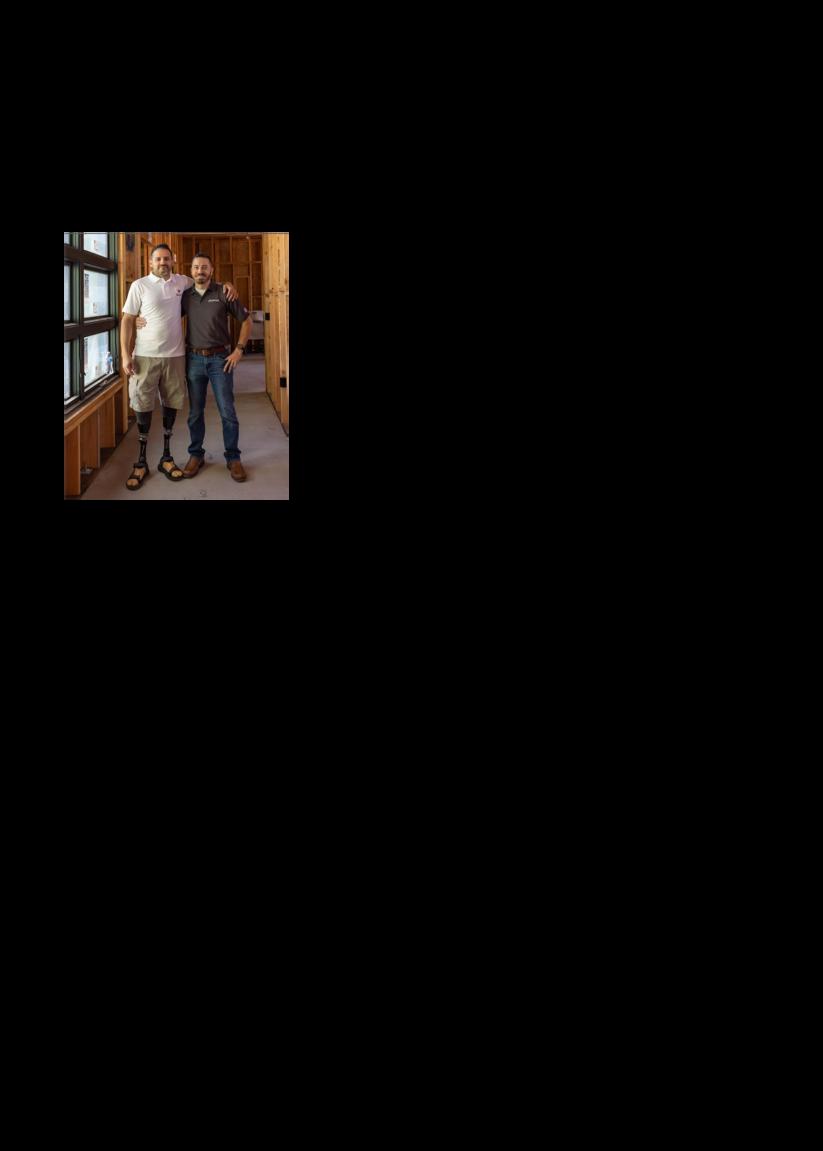
“ Our effort is just one small ripple in the ocean that builds into the wave of giving our nation’s veterans the freedom and independence they deserve for the sacrifices they made for our country.”
Joe Miranda, Director of Product Management, JELD-WEN; Chair, JELD-WEN’s Veterans’ Network ERG
Our Approach
We leave our mark in every community in which we operate. Community support is integral to our culture, and we encourage all associates to consider how they can give back individually, and as part of the JELD-WEN team.
In 2024, we developed a formal policy that outlines our charitable giving priorities, process, controls and approval thresholds; the policy became active in January 2025. Per the policy, charitable contributions provided by JELD-WEN must comply with our Code of Business Conduct and Ethics, align with our purpose and values, and must be reviewed and approved in accordance with the policy.
We focus on initiatives that promote a sustainable workforce, sustainable housing and a sustainable industry. JELD-WEN supports organizations via monetary and in-kind contributions that help create healthy communities, provide affordable and safe housing, and/or develop the manufacturing workforce.
In 2024, we supported a variety of organizations including the following through product donations, volunteer hours or monetary contributions and commitments: the American Heart Association, Atrium Health Foundation, Charlotte Sports Foundation, Charlotte Regional Business Alliance, Habitat for Humanity, the Gary Sinise Foundation R.I.S.E. Program, Second Harvest Food Bank, Roof Above, Crisis Assistance Ministry, the Lowe’s Foundation, and The Home Depot Foundation.
Actions and Outcomes
The following initiatives exemplify our dedication to community engagement.
A Winning Combination for a Wounded Veteran
JELD-WEN’s Veterans’ Network ERG has teamed up with the Gary Sinise Foundation’s R.I.S.E. program which provides specially adapted smart homes and home modifications to severely wounded veterans, first responders and their families.
After learning the Gary Sinise Foundation did not have a windows and door manufacturer partner, Joe Miranda, director of product management and chair of our Veterans’ Network ERG, saw an opportunity to act on
JELD-WEN’s purpose — to bring beauty and security to the spaces that touch our lives — to benefit a special veteran.
Wounded veteran U.S. Army Staff Sergeant Oregon Dennet and his family moved into one of the homes the Gary Sinise Foundation built in 2024. Fitted with JELD-WEN Siteline® windows from our Rantoul, Illinois facility and LaCantina® patio doors from our Oceanside, California facility, this is the first Gary Sinise Foundation home constructed with donations from JELD-WEN.
Paving the Way for Construction’s Next Generation
Hands-on experience is a proven way for students to explore potential careers. When the annual SoCal Design Build Competition introduced high school students to careers within the construction industry, JELD-WEN was there with a sponsorship and the donation of 35 VPI Quality Windows (a JELD-WEN North America brand) Events like this are critical to our industry, giving the next generation meaningful exposure to career opportunities they likely did not know existed.
Building Hope and Homes
When Habitat for Humanity Niagara and Centennial Homes collaborated to create sustainable homes in Thorold, Ontario, JELD-WEN of Canada was proud to have its windows chosen for this impactful project. Habitat for Humanity Niagara’s longstanding commitment to building affordable housing for families in need, aligns with JELD-WEN of Canada’s values of innovation, quality and sustainability. Not only will the new homes strengthen the community by providing safe, comfortable and energy-efficient living spaces, but they also create a foundation for brighter futures for the families who will live in them. The new homes feature JELD-WEN windows which are known for their energy efficiency, durability and aesthetic appeal. They ensure year-round comfort, reduce energy costs and contribute to a greener environment.

Governance
With robust corporate governance, transparency and accountability, we are delivering on our promises and strengthening the foundation of our business. As our ALL IN transformation continues, we are dedicated to unlocking JELD-WEN’s full potential for all stakeholders and working to achieve our ESG goals.
> Read more: Our ESG Governance, page 13
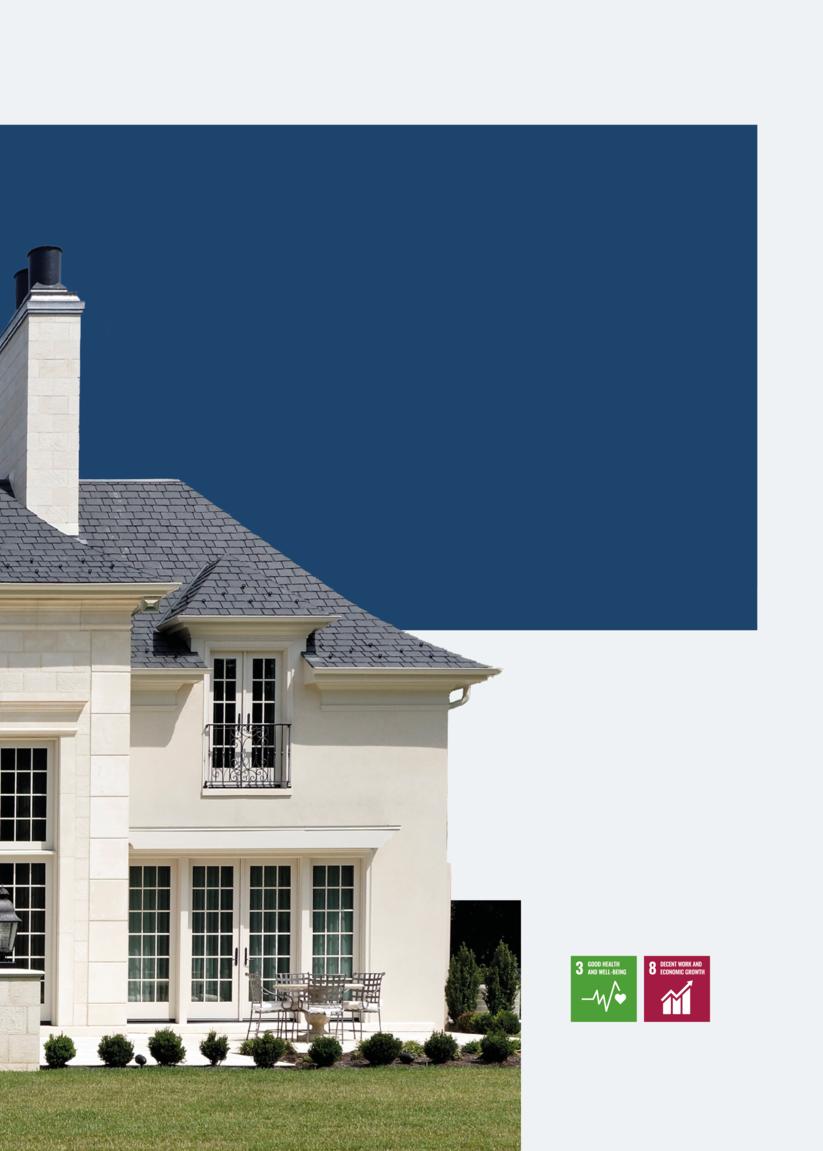
UN Sustainable Development Goals
Our goals, commitments and key initiatives related to Governance support:
Product Quality & Safety

of JELD-WEN’s sites in Europe are certified according to the standard ISO 9001
Our Approach
Our focus on quality and safety reflects our dedication to protecting our associates, our consumers and the environment. Safety and reliability are a priority as we design and manufacture our products. We rigorously test our products to ensure they are compliant with all applicable safety standards. Globally, we actively monitor regulations at the national and state level and engage with the appropriate offices to help ensure we comply with new regulations or determine a path to compliance. As we continue to pursue Cradle to Cradle certification in Europe, we consider material health, defined by Cradle to Cradle as “ensuring materials are safe for humans and the environment”.
To protect our associates and consumers from exposure to harmful chemicals, we maintain a sharp focus on chemicals within our raw materials. Our local teams, which are experts in jurisdictional regulations, assess any new products and reassess products after product changes.
Our products contain paints, glues and adhesives, sealants and other ancillary chemicals used during manufacturing and cleaning. Although chemicals in our products tend to be present at lower concentrations compared to other industries, we continue to seek safer alternatives.
To limit hazardous emissions from products during their use phase, we align with certifications and standards, including but not limited to ENERGY STAR® certification, Eco-Labeling, Restriction of Hazardous Substances (RoHS) directive, Indoor Air Quality certifications, chemical management standards and LCAs. Through their implementation, we can also reduce the environmental impact of our operations and our products as we provide consumers with safer, environmentally friendly choices.
“ By working together, we create efficiency and productivity in our operations, take care of our customers, and protect each other and the environment.”
Katren Sellik, Sustainability & Compliance Manager, JELD-WEN Europe
Actions and Outcomes
Standardization Brings Value
Through ingenuity, rigor, testing and time, we are transforming the way our products are made. Our global transformation has given a runway to advance initiatives specifically focused on standardization and consistency, as consistency is crucial in maintaining quality standards. For example, after analyzing a specific door part and function, a project team at our Klamath Falls, Oregon, site was able to consolidate purchases to fewer vendors and introduce the high- quality prototype to different sites.
As we work towards consistency in our operation, we are mindful that different regions have different needs. An exterior door that performs well in freezing weather, for example, may not be the best choice for hot, humid Florida weather. To help ensure that we consider important distinctions, our engineers provide guidance in the conversations between product line managers and procurement teams on what makes the most sense in terms of product design, function and value.
Further, our North America R&D team has developed a testing database so any user can view the tests required based on the type of product and any feature changes.
Reducing VOC Emissions
Reducing VOC (volatile organic compounds) emissions from our products and factories is a priority. We adhere to testing standards in the regions in which we operate.
In North America, we test our products for VOCs to UL 2821 and assess any new product or potential supplier to the same test standard; 99.4 percent of our manufactured eligible products met VOC emission standards. We adhere to various testing standards in Europe based on the operating country. In Finland, 98.3 percent of our manufactured eligible products met emission standards criteria on VOC testing results. In 2023, we evaluated JELD-WEN Deutschland Gmbh & Co. KG.
We use VOC testing to assess compliance with global product stewardship laws including California’s
Proposition 65, which requires businesses to provide warnings to Californians about significant exposures to chemicals that cause cancer, birth defects or other reproductive harm.
The majority of paints in North America and Europe are water-based. Our goal is to improve safety, ease chemical requirements and further reduce our impact on the environment.
Implementing water-based and UVbased chemical systems help reduce both VOC and carbon emissions. For example, by replacing paints and adhesives at four European sites, we have reduced VOC emissions. We continue to investigate the use of LED curing solutions to add energy savings to our 100 percent UV systems. For more details on VOC emissions, see Air Quality

Introducing New Chemicals
We take steps to ensure chemicals within our raw materials comply with applicable regulations meant to protect consumer health.
Before introducing a new chemical, our sites in Northern Europe and the U.K. are required to apply for approval of the new chemical in our Chemsoft risk assessment module. Less harmful alternatives must be considered before a chemical can be approved. In other regions, our procurement teams work closely with suppliers to monitor chemical compliance.
JELD-WEN complies with regulatory standards on hazardous chemicals and materials across the regions in which it operates.
We use the SDS module in My EHS to maintain a repository of all safety data sheets for chemicals in our manufacturing sites. The module also includes a chemical approval process that will ensure the appropriate people in the organization are reviewing new chemicals, furthering our goal of additional transparency. For more details about chemical compliance and management, see Environmental Management

Corporate Governance & Ethics
Our Approach
We believe that good corporate governance helps ensure that the company is managed for the long-term benefit of our stockholders.
Our corporate governance practices reflect our commitment to the highest standards of ethics, integrity and transparency. Our Board of Directors and executive leadership are dedicated to maintaining these standards, which are key to our long-term success.
We regularly review and consider our corporate governance policies and practices, taking into account the U.S. Securities and Exchange Commission’s corporate governance rules and regulations, the corporate governance standards of the New York Stock Exchange, and stockholder feedback.
Our Corporate Governance Guidelines provide a framework for the governance of the company as a whole and describe the principles and practices that the board follows in carrying out its responsibilities. Our Corporate Governance Guidelines are posted in the Governance section of our website at investors.jeld-wen.com.
Our Code of Business Conduct and Ethics (also referred to as Code of Conduct) helps us connect our values to our actions. Posted on our corporate website, the Code of Conduct guides our employees to make good decisions, uphold the law, interact with others and keep us on the right path together.
Our ethics and compliance strategy commitments are mapped to four action plan categories:
– Written policies and procedures
– Effective training and communication
– Internal monitoring, auditing and effectiveness assessment
– Prompt response to detected issues via corrective action and enforcement of standards via incentives and disciplinary measures
Actions and Outcomes
Board of Directors
We are proud to have a diverse Board of Directors. In 2024 our board was composed of 40 percent women, and our board as a whole represents a diverse set of expertise including ESG, human capital management, IT and cybersecurity, and regulatory and government relations. To help the board gain more in-depth knowledge about relevant subjects, we share information on continuing education courses and seminars on a quarterly basis. For details on corporate governance, see Our ESG Governance and our 2025 Proxy Statement
Corporate Ethics & Policies
Guided by a strategic plan that focuses on our policies, training and communication, and monitoring and response, we have embedded and instilled ethics and integrity values across our business and operations.
Our Code of Conduct applies to all of our directors, officers and associates. Graphical, interactive and values-based, it is our associates’ tool for making good decisions and bringing our policies and our values to life in their daily work. A Q&A section helps employees and business partners learn through concrete examples.
In addition to the Code of Conduct, the following policies are related to our commitment to ethical business practices: Anti-Corruption, Antitrust & Competition Law, Anti-Harassment & Discrimination, Conflicts of Interest, and Equal-Employment Opportunity.
Our Whistleblower and Non-Retaliation Policy requires company personnel to report any known or suspected violations of noncompliance with our Code of Conduct or other policies and procedures; legal and regulatory requirements; and company policies related to modern slavery and human trafficking; as well as questionable accounting and auditing matters.
We respect the rights of our associates to engage in the political process. However, any gifts or payments to government officials, including politicians, with the hope of a business-related favor in return, may be considered a bribe and therefore are prohibited.
Our Human Rights Policy Statement reiterates our commitment to freedom of association and collective bargaining; legal minimum wage and all legally mandated benefits; prevention of excessive working hours; aspirations for the provision of a living wage; employees’ right to access to water, sanitation, and hygiene; supply chain vigilance and grievance mechanisms. The company encourages the reporting of human rights violations and strives to address and remedy (where appropriate) reports promptly and without delay.
All associates, including manufacturing line workers, have access to our policies, procedures, codes and standards on our global Policy Portal platform. Associates are required to attest to the Code of Conduct annually.
Training & Communication
We conduct regular employee training on ethics, compliance and cybersecurity. Regional training includes anti-harassment training in the U.S. Globally, all new associates receive training on anti-bribery and anti-corruption, antitrust, data privacy, and our Code of Conduct during the onboarding process.
We communicate the importance of ethical behavior and doing the right thing to our associates via town halls and management meetings, as well as posters promoting our 24/7 ethics helpline in every facility.
Our membership in the global Business Ethics Leadership Alliance (BELA) gives us the opportunity to share best practices with leaders around the world in the ethics and compliance space.
Empowered to Speak Up
We encourage our associates to report noncompliance with the Code of Conduct free of retaliation. Violations can be reported to an associate’s manager, the HR team, the legal department, any executive officer, or via JELD-WEN’s third-party Ethics Helpline. Hosted by EthicsPoint, the 24/7 Ethics Helpline is available to anyone who wants to ask questions about or report potential violations of JELD-WEN’s Code of Business Conduct & Ethics, other policies, regulations, or laws. Reports can be made anonymously (where permitted by law) via a web interface or local telephone number. Results are reported back and applicable actions or remediation is taken.
We do not tolerate retaliation of any kind against anyone who shares a concern in good faith or assists with an investigation.
“ It’s one thing to have a set of values. It’s quite another to turn them into actions.
JELD-WEN’s Code of Business Conduct and Ethics helps us make that connection, bringing our values to life in all that we do.”
Andrew Rink, Vice President, Chief Compliance Officer, JELD-WEN

Corporate Ethics Data In 20243
97% of associates trained in anti-bribery and anti-corruption
95% of associates trained in insider training
Regulatory Compliance & Risk Management
Our Approach
Risk surveys and our ERM system help us identify, assess and manage risks. Working with external vendors, we conduct periodic risk assessments and determine top risks in each region. Business impact analysis and business continuity planning play a role in our physical risk assessments as we manage the risks around flood, fire and other climate-related topics.
Oversight
Enterprise Risk Management is overseen by the Board of Directors. Management regularly reports to the Audit Committee on ERM and compliance matters.
The Audit Committee has primary oversight of the Company's ERM program and policies and ethics and compliance programs.
Actions and Outcomes
In 2024, we completed work with a consultant to formalize our ERM procedures and move to a fully ‘managed’ capability level with respect to ERM framework activities.
A formal ERM charter, framework and policy are now in place. We have also formalized our risk identification and prioritization process to institutionalize risk prioritization and scoring, as well as developing mechanisms to identify new and emerging risks. Lastly, we have formalized risk mitigation plans and identified risk owners.

With an enhanced ERM framework incorporated into our strategy, we have developed ERM education and training to raise awareness internally. Risk mitigation plans have been formed and will be reported on regularly to the Audit Committee.
Improving Impact Analysis and Continuity Planning
We purchased a new system to improve Business Impact Analysis (BIA) and Business Continuity Planning (BCP) in 2024. Implementation of the BCP module is underway in 2025. We are focused on ensuring that the BCP process will help our operations management teams identify and assess key vulnerabilities and develop useful contingency plans for the temporary unexpected loss of critical processes and inputs.
Data Protection & Cybersecurity
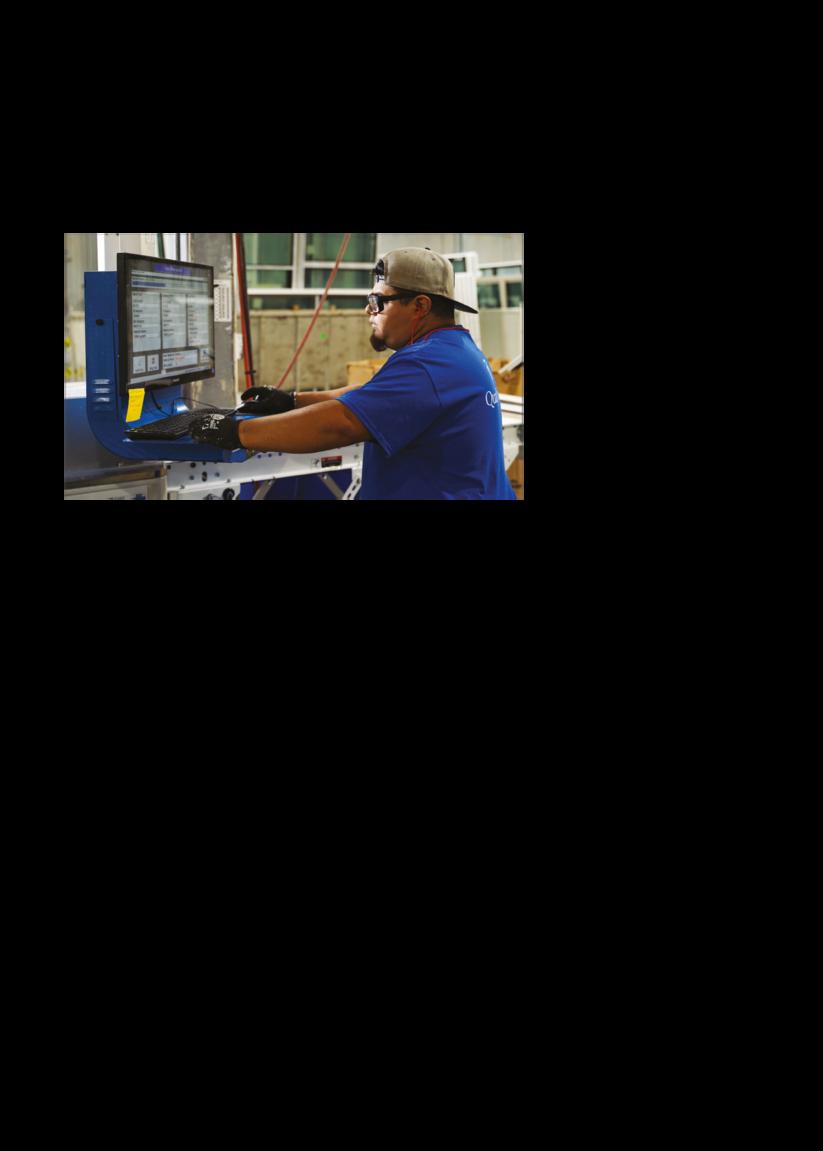
“
At JELD-WEN, safety is always our top priority — and that includes the security of our technology infrastructure. As we embrace new technologies to drive efficiency, we remain steadfast in our commitment to never compromise on cybersecurity.”
Matt Meier, EVP, Chief Digital and Information Officer, JELD-WEN
Our Approach
Data security and privacy are critically important. We respect all personal information shared with us and carefully follow the law to protect it. We maintain a robust system aligned with the National Institute of Standards and Technology (NIST) framework to assess, identify and manage cybersecurity threats.
A comprehensive information security policy outlines the technical and organizational measures we have in place to protect the confidentiality, integrity and availability of data. This includes access controls, encryption, network security, vulnerability management and incident response procedures. Our cybersecurity risk management processes include review and assessment by external, independent third parties, who assess the maturity of our cybersecurity program and identify areas for continued focus and improvement.
We are committed to respecting the privacy rights of our customers, employees and stakeholders. Our privacy policy adheres to applicable data protection regulations (e.g. EU GDPR and U.S. state laws) and outlines how we collect, use, store and protect personal information.
Cybersecurity/Data Privacy Training and Engagement
Our work is guided by principles addressing both internal and external security that foster a culture of data protection.
Our cybersecurity team conducts routine cyber awareness training for professional associates using an independent third-party security training provider to educate associates on best practices, policies and responsibilities pertaining to cybersecurity. New hires are educated on cybersecurity fundamentals (e.g. how to spot a phishing email, password security, etc.). Regular awareness campaigns and phishing simulations help maintain a strong human firewall.
Managing Vendor Risk
Our stringent vendor risk management program assesses the security and privacy practices of our third-party service providers. We contractually obligate vendors to adhere to our security and privacy standards and conduct regular audits to ensure compliance. Third-party contingent labor also receives cybersecurity training.
Actions and Outcomes
We continue to work on our ability to identify, protect, detect, respond to and recover from a cyber event using industry standard frameworks from NIST.
To improve user experience and the security of our endpoints, we are upgrading our operating system to Windows 11. This enhances security through frictionless updates and provides more functionality for productivity. In addition, we will introduce always-on VPN that will complement our current VPN client to help ensure the environment is kept updated and current.
We created and are testing a robust data classification framework that categorizes data based on its sensitivity and criticality and helps determine the data life cycle. This program is designed to ensure that appropriate controls and access restrictions are applied to safeguard data throughout its life cycle.
We continue the implementation of a Zero Trust security model, which assumes that no user or device should be automatically trusted. This initiative involves strong authentication, device health checks and granular access based on the principles of least privilege.
Our 24/7 global Security Operations Center keeps constant vigil as it identifies and responds to threats and sophisticated attacks on a regular basis.
Our dedicated threat intelligence and dark web monitoring team proactively identifies and mitigates threats such as stolen credentials and leaked data.
To improve our response playbook and strategy for cyber-attacks, we routinely conduct cyber breach tabletop exercises that simulate sophisticated attacks on JELD-WEN’s systems.
Sustainable Procurement
Our Goals and Commitments
By 2030, we plan to source 100 percent of wood for manufacturing that is certified by a recognized third party or not from a region of risk.
Our Approach
We source raw materials responsibly, managing sustainable practices in our supply chain to minimize our carbon footprint. Because many of our products are wood based and sourced from a renewable resource, we seek to work with landowners who apply sustainable practices and prioritize certified sustainable wood. Policies
In 2024, we introduced a new Global Wood Sourcing Policy to support our goal of 100 percent of wood used in production will be responsibly sourced by 2030.
We are committed to ensuring the integrity of the products we sell by carefully considering their origins. We require all our suppliers to follow all applicable laws and regulations, including our Supplier Code of Conduct and the JELD-WEN Code of Business Conduct, which set forth our values and requirements for ethical sourcing and preserving the environment
The Supplier Code of Conduct requires suppliers to acknowledge our Conflict Minerals Policy Statement and exercise due diligence when claiming certification for products. Additionally, we continuously monitor our suppliers for adverse claims, judgments or reports of unethical and illegal behavior.
Our sourcing activities are guided by our Europe Procurement Policy, also Legal Source Due Diligence Manual and our Supplier Code of Conduct
Compliance With EU Regulations
We are preparing for the 2026 implementation of the EU Deforestation Regulation (EUDR), which aims to prevent products linked to deforestation from entering the EU market.
EUDR due diligence requirements include: the establishment of a formal due diligence system, country risk assessments, due diligence statements with geolocation data and legality assessment confirmation, and annual public reporting.
Material Impacts, Risks and Opportunities (IROs)

In preparation, we purchased a best-in-class platform in 2025 and have developed a due diligence handling system to help ensure compliance with the upcoming EUDR legislation.
We are also reviewing and updating our European wood sourcing policies and procedures and training suppliers. The Legal Source Due Diligence Manual provides guidelines for meeting the due diligence requirements of the EU Deforestation Regulation.
Actions and Outcomes
Supplier Review and Assessment
Prior to engaging in business with a supplier, and throughout the term of the relationship, JELD-WEN assesses the supplier’s compliance with our ethical standards.
We employ a third-party risk and compliance assessment tool to assess and rate new suppliers and vendors based on adverse media, sanctions, watch lists and politically exposed persons. If a supplier is identified as non-compliant, we take decisive action by either terminating our business relationship or working closely with the vendor to achieve compliance, based on the nature of the compliance issue.
At least annually, our management team reviews our exposure to various supply chain risks to assess whether our policies and procedures appropriately identify and address such risks. We evaluate our supply chain and identify high-risk exposures on parameters including known risks and country location. When issues are identified, we work with the relevant suppliers to help them improve.
For more details on our approach to risk management, see Regulatory Compliance and Risk Management
Our supplier portal allows us to survey suppliers via a centralized platform. Not only does this platform enable us to provide better QA/QC of supplier responses, but it also improves our ability to maintain data in our system.
Sustainable Wood Sourcing and Certification
As a leading member of the global fenestration industry, JELD-WEN purchases significant amounts of wood and wood fiber. Securing a long-term, sustainable supply of wood and wood fiber is crucial for our enduring success. A total of 63 percent of suppliers are in compliance with our policy. Suppliers are required to provide third-party certified wood products from regions of risk or evidence from other regions of the supplier’s compliance with the Policy at the request of JELD-WEN.
To achieve our responsible sourcing goal, we have:
– Formed a Responsible Wood Sourcing Committee
– Surveyed 94 percent of wood suppliers in North America and reviewed supporting documentation in Europe to assess compliance with the new policy
– Conducted a risk-based analysis of the surveys based on country of harvest, wood species, spend, supplier procurement policies and third-party sourcing certifications
–
Based on the results of the risk analysis, we will perform reviews of select wood vendors
In Europe, 82 percent of our sourced wood was certified by third-party forest management standards, 30 percent of wood sourced was FSC™ certified and 52 percent of wood sourced was PEFC certified.
Promoting Sustainable Forestry JELD-WEN North America is participating in the Alliance for Wood ID Testing pilot facilitated by the World Wildlife Fund (WWF) U.S. and the World Forest ID. The group aims to combat illegal logging — which threatens biodiversity, climate stability, legitimate businesses and local communities — through scientific study. JELD-WEN and other participants sent wood samples to a laboratory to evaluate potentially high-risk supply chains. Lessons learned and results will be shared to amplify the impact and credibility of the work.

“
By setting high standards for ourselves, our vendors, suppliers and other business partners, we can ensure compliance with ethical principles and foster a culture of accountability, quality and safety.”
Jas Hayes, EVP, General Counsel and Corporate Secretary
Workers in the Supply Chain

Material Impacts, Risks and Opportunities (IROs)
Our Approach
We are committed to protecting individuals’ rights and their basic human dignity along our supply chain. We hold our suppliers and business partners to the same high standards outlined in our Code of Business Conduct and Ethics. We do not do business with any entity that engage in human rights abuses. We source materials responsibly and we make sure our business partners don’t manufacture or use conflict minerals, which may contribute to unrest in some countries.
We actively engage with our stakeholders and direct suppliers to address sustainability, as well as the risk of human rights abuses, including forced labor and human trafficking, deep in our supply chain.
JELD-WEN requires all of its suppliers to comply with the applicable laws and regulations of the United States, and those of the respective country of manufacture or exportation.
Policies
Our Supplier Code of Conduct, which is part of our standard business contract, outlines standards with regards to labor and human rights, health and safety in the workplace, environmental compliance and ethical business practices. It sets forth minimum workplace and business practice standards for any supplier doing business with JELD-WEN. We require suppliers and their employees to commit to this Code of Conduct as a condition of doing business.
As noted in our Human Rights Policy Statement JELD-WEN maintains vigilance over its supply chain and human rights issues that could arise. We conduct regular due diligence practices that govern engagement with suppliers and other stakeholders; auditing or monitoring activities; training; and corrective actions where appropriate. For details about our Human Rights Policy Statement, see Corporate Governance & Ethics

Our Global Wood Sourcing Policy calls on JELD-WEN and our global subsidiaries to ensure that the sourcing and production of wood products safeguards human rights in our operations and supply chain. Suppliers are required to provide third-party certified wood products from regions of risk or evidence from other regions of the supplier’s compliance with the Policy at the request of JELD-WEN.
Actions and Outcomes
Our team conducts on-site visits with suppliers as necessary. These visits usually involve a tour of the plant, conversations with production workers, and a review of progress in the areas of safety, quality and cost. Discussions of sustainability efforts and audit findings also take place if necessary.
Employees who are responsible for supply chain-related decisions at JELD-WEN receive training on identifying and addressing unethical behavior in our supply chain.

Data & Disclosure
We continue to pursue high standards for transparency and reporting, grounded in validated and robust external sources. A unified framework for data collection helps ensure JELD-WEN’s accountability towards our ESG goals and transparency in strategy, plans and roadmaps.

About This Report

JELD-WEN’s Sustainability Report is published annually, and is designed to align with ESG best practice reporting frameworks and standards such as the SASB for our industry ‘Building Products & Furnishings’, the Revised GRI Standards (2021) and the TCFD. The information reported covers the period January 1, 2024 to December 31, 2024, unless otherwise stated, and includes data about JELD-WEN Holding, Inc. and its consolidated subsidiaries, capturing the same entities and reporting period as our financial reports.
As we improve our ESG reporting, we note that it may be necessary to restate our data. Reasons for restatements could include changes in reporting boundaries, metric definitions or calculation methodologies. We will highlight the restated items and reasons for restatement if we believe it would be meaningful information. As noted in this report, we have revised some of our goals to better align with our priorities.
We have updated our responsible wood sourcing goal and added a health and safety goal. Our recycled material goal has been retired. Certain energy, waste, and emissions data presented in this report have been restated to reflect updates in calculation methodologies and data refinement processes. Throughout this report, rounding may influence totals.
This report includes trademarks, such as JELD-WEN®, which are protected under applicable intellectual property laws and are the property of JELD-WEN or its subsidiaries. This report also contains trademarks, service marks, copyrights and trade names of other companies, which are the property of their respective owners. Solely for convenience, JELD-WEN’s trademarks and trade names referred to in this report may appear without the ® or ™ symbols. Such references are not intended to indicate, in any way, that we will not assert, to the fullest extent under applicable law, our rights or the right of the applicable licensor to these trademarks and trade names.
The publication date of this report is July 29, 2025.
A review of relevant processes and select data elements have been conducted by our Financial reporting team, internal subject matters experts and external consultants to support accuracy and consistency. The information reported related to Scope 1, Scope 2 (location-based) and Scope 2 (market-based) GHG emissions has been externally assured. Our Independent Assurance Statement can be found in the Independent Assurance Statement section.
Association Memberships
Our participation in organizations, including the ones listed below, gives us the opportunity to influence policy, share best practices and highlight JELD-WEN’s achievements.
– The British Woodworking Federation
– Business Ethics Leadership Alliance
– Charlotte Regional Business Alliance
– Circular Action Alliance
– Fenestration & Glazing Industry Alliance
– Grinnell Chamber of Commerce
– Klamath County Chamber of Commerce
– Knox County Chamber of Commerce
– Manufacturers Alliance
– National Association of Homebuilders
– National Fenestration Rating Council
– National Safety Council
– Verband der Deutschen Holzwerkstoffindustrie e. V. (VHI)
– Western Wood Products Association
– Window & Door Manufacturers Association
–
World Millwork Alliance
Forward-Looking Statements

This report contains forward-looking statements within the meaning of the Private Securities Litigation Reform Act of 1995. These forward-looking statements are generally identified by the use of forwardlooking terminology, including the terms ‘anticipate,’ ‘believe,’ ‘continue,’ ‘could,’ ‘estimate,’ ‘expect,’ ‘intend,’ ‘likely,’ ‘may,’ ‘plan,’ ‘possible,’ ‘potential,’ ‘predict,’ ‘project,’ ‘should,’ ‘target,’ ‘will,’ ‘would’ and, in each case, their negative or other various or comparable terminology. All statements other than statements of historical facts are forward-looking statements, including statements regarding our business strategies and related business and stakeholder impacts and our ability to execute on our plans, initiatives, projections, goals and commitments, all of which involve risks and uncertainties that could cause actual results to differ materially.
For a discussion of these risks and uncertainties, please refer to our Annual Report on Form 10-K for the year ended December 31, 2024, and our other filings with the U.S. Securities and Exchange Commission. Do not unduly rely on forwardlooking statements as actual results could differ materially from expectations. Forwardlooking statements speak only as of the date made, and we do not undertake to update or revise them to reflect changes, new information, or events that occur after that date, except as required by law.
This report does not cover all information about our business. References in this report to information should not be construed as a characterization regarding the materiality of such information to our financial results. While certain matters discussed in this report may be significant, any significance should not be read as necessarily rising to the level of materiality used for the purposes of complying with U.S. federal securities laws.
Material Topic
Definitions
Environmental
Air Quality
Biodiversity & Ecosystems
Climate & Energy
Innovation & Circular Economy
Water Resources
– Reduction and management of harmful pollutants emitted by JELD-WEN along the value chain that affect air quality including; NOx, SOx, PM10, dioxins/furans, VOCs, PAHs, heavy metals.
– Protecting natural ecosystems and habitats from JELD-WEN activities along the value chain and conservation and restoration activities to minimize and reduce biodiversity loss or habitat degradation.
– Adaptation and mitigation of the impacts of climate change through JELD-WEN activities aimed at reducing emissions across its operations, along the supply chain and beyond (Scopes 1, 2 and 3), including transitioning to alternate or renewable energy sources, embedding efficiencies in manufacturing and providing energy-efficient products.
– Innovation of materials and use of circular principles to design products and promote manufacturing processes that are supportive of the circular economy, including management of waste through activities that minimize and divert waste from landfill and promote recycling where possible.
– Responsible consumption and management of water resources, promoting minimization of water use, efficient use of water as well as the responsible treatment and disposal of water waste and effluents by JELD-WEN.
Material Topic Definition
Material Topic Definitions Continued
Community Engagement – Community engagement, corporate philanthropy and fundraising driven by JELD-WEN and its employees to benefit the communities in which JELD-WEN operates.
Diversity, Equity & Inclusion – Fostering a diverse, equitable and inclusive workforce and culture through the equal treatment and equal access to opportunities for all employees.
Employee Working Conditions, Health & Safety
Talent Attraction, Retention & Development
– Ensuring the physical and mental wellbeing of JELD-WEN employees with best-in-class safety management systems, standards and training requirements preventing workplace injuries, fatalities and illnesses whilst promoting healthy working hours and a positive work-life balance and upholding human rights, labor and compensation standards.
– Delivery of robust and effective talent attraction and retention through the provision of competitive benefits and compensation packages and ensuring training and development opportunities to boost personal and professional growth of current and future talent.
Workers in the Supply Chain – Fair and compliant standards linked to human rights, health and safety of workers throughout JELD-WEN’s supply chain. This includes ensuring that workers in the supply chain do not face discrimination in any capacity and that there are robust anti-corruption guards in place.
Material Topic Definitions
Governance
Material
Corporate Governance & Ethics
– Ensuring transparent, ethical and accountable business conduct and corporate governance practices are in place to avoid instances of corruption, bribery, competitive behavior, conflicts of interest and unethical business and that these are adhered to.
Data Protection and Cybersecurity – Protecting and securing employee and customer data, as well as company data and IP with appropriate measures to reduce data and cyber risks, and ensuring the responsible and ethical use and management of AI.
Product Quality & Safety
– The development of products that are of high quality and deliver a high standard of performance that supports the safety and security of consumers and end users, enhances the home environment and poses no health and safety risks of any kind.
Sustainable Procurement – Sourcing and procurement of raw materials using sustainable practices and techniques, or in alignment with sustainable certifications (e.g. FSC™ or Cradle to Cradle).
ESG Data
United States Data Metrics
Executives = members of the Senior Leadership Team (SLT). Management = individuals who have a direct report. Senior management = executives and their direct reports (not including admin and support staff). Middle management = one level below senior management. Early management = one level below middle management, directly responsible for front line staff. Career Track = career path associated with an individual's job title. Production = staff that performs work directly tied to the creation of a product. Professionals = nonproduction roles. Does not include office hourly/support positions. Ethnically diverse = self-reported race, all non-white categories.
Governance
GRI Content Index
JELD-WEN has reported the information cited in this GRI content index for the period January 1, 2024 to December 31, 2024 with reference to the GRI Standards and in line with GRI 1: Foundation 2021.
Disclosure # Disclosure Topic
General Disclosures
The Organization and its Reporting Practices
2-1 Organizational details
2-2 Entities included in the organization’s sustainability reporting
2-3 Reporting period, frequency and contact point
2-4 Restatements of information
2-5 External assurance
Activities and Workers
2-6 Activities, value chain, and other business relationships
2-7 Employees
Governance
2-9 Governance structure and composition
2-10 Nomination and selection of the highest governance body
2-11 Chair of the highest governance body
2-12 Role of the highest governance body in overseeing the management of impacts
2-13 Delegation of responsibility for managing impacts
2-14 Role of the highest governance body in sustainability reporting
Response
Sustainability Report 2024: – Introduction, Who We Are, page 9 Annual Report 2024, pages 9-15
Sustainability Report 2024:
– Data & Disclosure, About this report, page 68
Sustainability Report 2024: – Data & Disclosure, About this report, page 68 – Back cover
Sustainability Report 2024:
– Data & Disclosure, About this report, page 68
Sustainability Report 2024: – Data & Disclosure, Independent Assurance Statement, page 90-91
Sustainability Report 2024:
– Introduction, Who We Are, page 9 – Introduction, Stakeholder Engagement, page 16-17
– Governance, Sustainable Procurement, page 62 Annual Report 2024, pages 9-15
Sustainability Report 2024: – Introduction, Who We Are, page 9 – Data & Disclosure, Social, page 76 Annual Report 2024, page 13
Sustainability Report 2024: – Introduction, Our ESG Governance, page 11
Proxy statement 2025, page 6-27
Proxy statement 2025, pages 14-16
Proxy statement 2025, page 9
Sustainability Report 2024:
– Introduction, Our ESG Governance, page 11
Proxy statement 2024, page 10
Sustainability Report 2024: – Introduction, Our ESG Governance, page 11
Proxy statement 2025, page 7
Sustainability Report 2024: – Introduction, Our ESG Governance, page 11
2-16 Communication of critical concerns Code of Business Conduct and Ethics, page 7-11
2-17 Collective knowledge of the highest governance body
2-18 Evaluation of the performance of the highest governance body
2-19 Remuneration policies
2-20 Process to determine remuneration
2-21 Annual total compensation ratio
Strategy, Policies, and Practices
2-22 Statement of sustainable strategy
2-23 Policy commitments
2-24 Embedding policy commitments
2-25 Processes to remediate negative impacts
2-26 Mechanisms for seeking advice and raising concerns
2-27 Compliance with laws and regulations
2-28 Membership associations
Stakeholder Engagement
2-29 Approach to stakeholder engagement
2-30 Collective bargaining agreements
Material Topics
3-1 Process to determine material topics
3-2 List of material topics
Sustainability Report 2024:
– Introduction, Our ESG Governance, page 11 Proxy statement 2025, pages 14-15
Proxy statement 2025, pages 27-49
Proxy statement 2025, pages 27-56
Proxy statement 2025, pages 27-56
Proxy statement 2025, page 56
Sustainability Report 2024:
– Introduction, CEO Letter, page 5
Sustainability Report 2024:
– Governance, Corporate Governance, Ethics & Compliance, page 58
– Governance, Sustainable Procurement, page 62 Code of Business Conduct and Ethics
Sustainability Report 2024:
– Introduction, Our ESG Governance, page 11
– Governance, Corporate Governance, Ethics & Compliance, page 58
– Governance, Sustainable Procurement, page 62 Code of Business Conduct and Ethics
Sustainability Report 2024:
– Governance, Corporate Governance, Ethics & Compliance, Empowered to Speak Up, page 59
Sustainability Report 2024:
– Governance, Corporate Governance, Ethics & Compliance, Empowered to Speak Up, page 59 Code of Business Conduct and Ethics, pages 7-11
Sustainability Report 2024:
– Environment, Environmental Management, page 34
Sustainability Report 2024:
– Data & Disclosure, About this report, page 68
Sustainability Report 2024:
– Introduction, Stakeholder Engagement, page 16-17
Annual Report 2024, page 13
Sustainability Report 2024:
– Introduction, Double Materiality Assessment, page 15
Sustainability Report 2024:
– Introduction, Double Materiality Assessment, page 15
– Data & Disclosure, Material Topics Definitions, page 70
GRI Content Index Continued
Topic-Specific Standards
Material Topic: Innovation & Circular Economy
GRI 301: Materials (2016)
3-3 Management of material topics
Sustainability Report 2024:
– Introduction, Our ESG Governance, page 11
– Introduction, Our ESG Framework, page 12
– Environment, Innovation & Circular Economy, page 36
301-1 Materials used by weight or volume
301-2 Recycled input materials used
Material Topic: Climate & Energy
GRI 302: Energy (2016)
3-3 Management of material topics
302-1 Energy consumption within the organization
302-3 Energy intensity
302-4 Reduction of energy consumption
Sustainability Report 2024:
– Data & Disclosure, ESG Data, Wood, page 75
Sustainability Report 2024:
– Data & Disclosure, ESG Data, Recycled Materials, page 75
Sustainability Report 2024:
– Introduction, Our ESG Governance, page 11
– Introduction, Our ESG Framework, page 12
– Our Products, Sustainable Products, 21
– Environment, Climate & Energy, page 26
Sustainability Report 2024:
– Environment, Climate & Energy, page 29
– Data & Disclosure, ESG Data, Energy, page 74
Sustainability Report 2024:
– Data & Disclosure, ESG Data, Energy, page 74
Sustainability Report 2024:
– Environment, Climate & Energy, page 27-28
– Data & Disclosure, ESG Data, Energy, page 74
Disclosure
Material Topic: Climate & Energy
GRI 305: Emissions (2016)
3-3 Management of material topics
Sustainability Report 2024:
– Introduction, Our ESG Governance, page 11
– Introduction, Our ESG Framework, page 12
– Environment, Climate & Energy, page 26
305-1 Direct (Scope 1) GHG emissions
305-2 Energy indirect (Scope 2) GHG emissions
305-4 GHG emissions intensity
305-5 Reduction of GHG emissions
Material Topic: Innovation & Circular Economy
GRI 306: Waste (2020)
3-3 Management of material topics
306-1 Waste generation and significant wasterelated impacts
306-2 Management of significant wasterelated impacts
306-3 Waste generated
306-4 Waste diverted from disposal
306-5 Waste directed to disposal
Sustainability Report 2024:
– Environment, Climate & Energy, page 28
– Data & Disclosure, ESG Data, GHG emissions, page 73
Sustainability Report 2024:
– Environment, Climate & Energy, page 28
– Data & Disclosure, ESG Data, GHG emissions, page 73
Sustainability Report 2024:
– Environment, Climate & Energy, page 28
Sustainability Report 2024:
– Environment, Climate & Energy, page 27-28
Sustainability Report 2024
– Introduction, Our ESG Governance, page 11
– Introduction, Our ESG Framework, page 12
– Environment, Innovation & Circular Economy, page 36
Sustainability Report 2024:
– Environment, Innovation & Circular Economy, Waste & Hazardous Materials, page 40
Sustainability Report 2024:
– Environment, Innovation & Circular Economy, Waste & Hazardous Materials, page 40
Sustainability Report 2024:
– Data & Disclosure, ESG Data, Waste, page 74
Sustainability Report 2024:
– Data & Disclosure, ESG Data, Waste, page 74
Sustainability Report 2024:
– Data & Disclosure, ESG Data, Waste, page 74
GRI Content Index
Material Topic: Health & Safety
GRI 403: Occupational Health & Safety (2018)
3-3 Management of material topics
403-1
403-2
Occupational health and safety management system
Hazard identification, risk assessment, and incident investigation
403-3 Occupational health services
403-5
403-8
403-9
403-10
Worker training on occupational health and safety
Workers covered by an occupational health and safety management system
Work-related injuries
Work-related ill health
Sustainability Report 2024: – Introduction, Our ESG Governance, page 11
– Introduction, Our ESG Framework, page 12
– Social, Health & Safety, page 44
JELD-WEN EH&S Policy
Sustainability Report 2024: – Social, Health & Safety, page 44
JELD-WEN EH&S Policy
Sustainability Report 2024: – Social, Health & Safety, page 45-46
JELD-WEN EH&S Policy
Sustainability Report 2024: – Social, Health & Safety, page 46
Sustainability Report 2024: – Social, Health & Safety, page 46
Sustainability Report 2024: – Social, Health & Safety, page 45
Sustainability Report 2024: – Social, Health & Safety, page 44-45 – Data & Disclosure, ESG Data, Health and Safety, page 75
Sustainability Report 2024: – Data & Disclosure, ESG Data, Health and Safety, page 75
Material Topic: Talent Attraction, Development & Retention
GRI 404: Training and Education 2016
3-3 Management of Material Topics
404-1 Average hours of training per year per employee
404-2 Programs for upgrading employee skills and transition assistance programs
Material Topic: Product Quality & Safety
3-3 Management of material topics
Sustainability Report 2024:
– Introduction, Our ESG Governance, page 11
– Introduction, Our ESG Framework, page 12 – Social, Talent Attraction, Development & Retention, Associate Development, page 62
Sustainability Report 2024:
– Data & Disclosure, ESG Data, Training, page 77
Sustainability Report 2024:
– Social, Talent Attraction, Development & Retention, page 62
Sustainability Report 2024:
– Introduction, Our ESG Governance, page 11
– Introduction, Our ESG Framework, page 12
– Governance, Product Quality & Safety, page 56
SASB Index
The table below references the SASB Standard for the Building Products & Furnishings industry, as defined by SASB’s Sustainable Industry Classification System.
Energy Management in Manufacturing
CG-BF-130a.1 (1) Total energy consumed
CG-BF-130a.1 (2) Percentage grid electricity
CG-BF-130a.1 (3) Percentage renewable
Management of Chemicals in Products
Product Life Cycle Environmental Impacts
CG-BF-250A.1 Discussion of processes to assess and manage risks and/or hazards associated with chemicals in products
CG-BF-250A.2 Percentage of eligible products meeting volatile organic compound (VOC) emissions and content standards
CG-BF-410a.1 Description of efforts to manage product life cycle impacts and meet demand for sustainable products
CG-BF-410a.2 Weight of end-of-life material recovered (metric tons)
Percentage of recovered materials recycled
Sustainability Report 2024: – Data & Disclosure, ESG Data, Energy, page 74
Sustainability Report 2024: – Data & Disclosure, ESG Data, Energy, page 74
Sustainability Report 2024: – Data & Disclosure, ESG Data, Energy, page 74
Sustainability Report 2024: – Governance, Product Quality & Safety, page 56
Sustainability Report 2024: – Data & Disclosure, ESG Data, Product Emissions, page 77
Sustainability Report 2024: – Our Products, Sustainable Products, 21-22 – Environment, Innovation & Circular Economy, Our Approach, Actions and Outcomes page 36-39
Sustainability Report 2024: – Data & Disclosure, ESG Data, Waste, page 74
Sustainability Report 2024: – Environment, Innovation & Circular Economy, Waste & Hazardous Materials, page 41
Wood Supply Chain Management
Activity Metric
CG-BF-430a.1
Total weight of wood fiber materials purchased
Percentage of wood fiber materials from third-party certified forestlands
Percentage of wood fiber materials by standard
Percentage of wood fiber materials certified to other wood fiber standards
Note to CG-BF-430a.1
CG-BF-000.A Annual production
Sustainability Report 2024: – Data & Disclosure, ESG Data, Wood, page 75
Sustainability Report 2024: – Data & Disclosure, ESG Data, Wood, page 75
Sustainability Report 2024: – Data & Disclosure, ESG Data, Wood, page 75
Sustainability Report 2024: – Data & Disclosure, ESG Data, Wood, page 75
Sustainability Report 2024: – Governance, Sustainable Procurement, page 62
Sustainability Report 2024: – Introduction, Who We Are, page 10
TCFD Index
This Report aligns with the recommendations from the TCFD, our voluntary disclosure on climate-related risks and opportunities. The Index below includes our responses to each of the 11 recommendations of TCFD.
Governance
Disclose the organization’s governance around climate-related risks and opportunities.
Strategy
Disclose the actual and potential impacts of climate-related risks and opportunities on the organization’s businesses, strategy and financial planning where such information is material.
a) Describe the Board’s oversight of climate-related risks and opportunities. Sustainability Report 2024: Introduction, Our ESG Governance, page 11
b) Describe management’s role in assessing and managing climate-related risks and opportunities. Sustainability Report 2024: Introduction, Our ESG Governance, page 11
a) Describe the climate-related risks and opportunities the organization has identified over the short, medium, and long term.
In the short- (zero to five years) and medium- (five to 10 years) term, our sites could be exposed to risk due to extreme temperatures, water stress, wildfire, flooding and drought. The majority of our asset value falls into the low risk category (less than 1 percent of asset value impacted by the climate hazard) with the exception of temperature extremes, which was identified as moderate (less than 5 percent of asset value impacted by the climate hazard) in the 2030s.
Medium- and longer-term physical risks include extreme heat, drought and flooding that could increase strain on electricity and water at our production facilities, potentially resulting in increased utility costs, inspections, fines or work stoppages due to extreme heat conditions. Temperature extremes has the largest potential financial risk in the longer-term relative to other climate hazards. The overall risk from all climate hazards is low from the 2020s to the 2090s with the exception of temperature extremes (moderate).
Our manufacturing and design processes are directly impacted by current climate-related regulations. Given the global reach of our facilities and the complexity of our operations, we are subject to a wide range of Environmental, Health, and Safety (EH&S) laws and regulations across multiple jurisdictions. Additionally, our products fall under various legal frameworks, including building codes, product safety standards, and energy efficiency mandates. We see climate-related opportunities as the economy shifts to lower consumption of fossil fuels. Consumer preferences are likely to move to more efficient options for homes and buildings constructed in line with global ambitions to reduce emissions. Consequently we expect the demand for energy-efficient products to continue to increase. For more information, see page 93.
b-c) Describe the impact of climate-related risks and opportunities on the organization’s businesses, strategy, and financial planning; Describe the resilience of the organization’s strategy, taking into consideration different climate-related scenarios, including a 2°C or lower scenario. We take a tailored approach to risk response, with a heightened focus on risks and opportunities with the highest magnitude of impact.
For example, to stay ahead of evolving regulations, our legal and compliance department diligently monitors emerging requirements. We believe we are well-positioned to respond to shifting consumer demand and emerging regulatory requirements with certified sustainable products, including Cradle to Cradle certified products in Europe and ENERGY STAR® in North America. For more details on product certification, see Products’ Environmental Impacts.
We believe we can enhance our resilience and navigate climate change’s complex challenges by taking a holistic and proactive approach that considers multiple scenarios, assesses risks and plans for adaptation and mitigation, while fostering collaboration and monitoring progress. It’s essential that we take climate change into account as we develop our strategies. Our commitment to sustainability extends benefits not only to our company and communities, but also to future generations.
Core Elements 2024
Risk Management
Disclose how the organization identifies, assesses and manages climate-related risks.
a-c) Describe the organization’s processes for identifying and assessing climate-related risks; Describe the organization’s processes for managing climate-related risks; Describe how processes for identifying, assessing and managing climate-related risks are integrated into the organization’s overall risk management.
Risk assessment and monitoring is of increased importance as climate change poses a growing challenge to business operations. In 2023, we started redefining our Enterprise Risk Management (ERM) process to formalize our governance structure, risk identification and prioritization, and risk mitigation plans. The redefining of our ERM process worked in parallel with our double materiality assessment to make sure ESG risks, including climate, were considered in our organizational ERM strategy.
To further assess JELD-WEN’s climate-related risks and opportunities, we conducted a climate scenario assessment in line with the Task Force on Climate-related Financial Disclosures (TCFD) in 2024.
Our scenario analysis included two physical and two transition risk scenarios. Under each risk scenario, two scenarios were further chosen in order to consider the potential financial impact of both a ‘low carbon’ and a ‘high carbon’ scenario.
Regarding physical risks, RCP 2.6 and RCP 7 capture the two potential pathways of increased climate warming, particularly in the short-medium term, which is more relevant to our broader business strategy. Climate indicator data was collected for both of these scenarios for 29 JELD-WEN facilities across nine physical climate hazards: pluvial flooding, riverine flooding, coastal flooding, hurricanes, wildfires, landslides, extreme heat, extreme cold and water scarcity.
For transition risks, the low carbon scenario that was chosen was the Announced Policy Scenario (APS), which is linked to potentially higher carbon pricing in the countries where we operate, as well as increased demand for some of our key products. The high carbon scenario is the Stated Policies Scenario (STEPS), which yielded relatively low impact from carbon taxes or other transition risks.
Metrics and Targets
Disclose the metrics and targets used to assess and manage relevant climate-related risks and opportunities where such information is material.
a) Disclose the metrics used by the organization to assess climate-related risks and opportunities in line with its strategy and risk management process.
Sustainability Report 2024:
– Environmental, Climate Change, Measuring our Emissions, Measuring our Energy Consumption and Renewable Energy, pages 24-25
Data & Disclosure, ESG Data, GHG emissions, page 77
b) Disclose Scope 1, Scope 2, and, if appropriate, Scope 3 GHG emissions, and the related risks.
Sustainability Report 2024:
– Environmental, Climate Change, Measuring our Emissions, page 24
– Data & Disclosure, ESG Data, GHG emissions, page 77
c) Describe the targets used by the organization to manage climate-related risks and opportunities and performance against targets.
Sustainability Report 2024:
– Introduction, Our 2050 Goals and Progress, page 16
Type Identified Risks
Transition Risks
Current regulation
Description
Current climate-related regulations can be relevant to our manufacturing and design processes. The geographic breadth of our facilities, the nature of our operations and many of our products are also subject to various climate-related laws and regulations.
Emerging regulation Emerging regulations are monitored by our legal and compliance department along with the ERM department and applicable regional teams, and we engaged a third-party consultant to review our upcoming European climate-related regulations and provide feedback on our implementation roadmaps.
Technology
Legal
Market
Physical Risks
Reputation
Acute physical
Changes in supply and demand due to technology change are monitored across the regions. In Europe, products with lower embodied carbon are favored by some consumers. By making our operations as efficient as possible through upgrading inefficient equipment like air compressors, we reduce the carbon required to make
As a public company with global operations, we are subject to the laws and regulations of the United States and multiple foreign jurisdictions.
We monitor market risks including changing customer behavior, uncertainty in market signals and supply chain pressure in our ERM processes. We recognize different regional preferences for certain materials and products. For example, our energy-efficient windows are a strong preference in the United States. In Europe, some consumers have a heightened focus on embodied carbon.
Reputational risks such as shifts in consumer preferences and increased stakeholder concern or negative stakeholder feedback could impact JELD-WEN. Reputational risks are monitored in the ERM process.
Our climate-related risk assessment identified the increased intensity and/or frequency of extreme natural occurrences (hurricanes, floods, wildfires, etc.) as acute physical risks. These could lead to the closure of our facilities and other direct damages. We can take steps to minimize losses by reviewing insurance for adequate coverage and applying for additional coverage, as appropriate.
Chronic physical
The consequences of climate change might lead to a higher risk of drought and reduced supplies of water. Some of our facilities rely on water to produce steam to form door skins, and ensuring access to water and using water responsibly is our priority. To address these pressures, we are monitoring our current water use and exploring water reuse opportunities to reduce our water usage.
Independent Assurance
Statement
Verification Opinion Statement Greenhouse Gas Emissions
Geosyntec Consultants, Inc (Geosyntec) was engaged by JELD-WEN, Holding Inc. (JELD-WEN) to conduct an independent verification of the greenhouse gas (GHG) emissions reported by JELD-WEN for the period of January 1 through December 31, 2024. This Verification Statement applies to the related information included within the scope of work described below.
The determination of the GHG emissions is the sole responsibility of JELD-WEN. JELD-WEN is responsible for the preparation and fair presentation of the GHG statement in accordance with the criteria. Geosyntec’s sole responsibility was to provide independent verification of the GHG emissions reported, and on the underlying systems and processes used to collect, analyze and review the information. Geosyntec is responsible for expressing an opinion on the GHG statement based on the verification. Verification activities applied in a limited level of assurance verification are less extensive in nature, timing and extent than in a reasonable level of assurance verification. The reliability of the assured data is subject to inherent uncertainties, given the available methods for determining, calculating, or estimating the underlying information.
Boundaries of the reporting company GHG emissions covered by the verification:
– Organizational: Operational Control
– Geographic: Worldwide, 148 Facilities1
– Exclusions from the boundary of JELD-WEN’s GHG emissions assertion include emissions from JELD-WEN’s joint ventures, partnerships, or other business arrangements where JELD-WEN does not hold a majority ownership interest or majority voting control
Types of GHGs: CO2, CH4, N2O
GHG Emissions Statement:
– Scope 1: 96,315 metric tons of CO2 equivalent
– Scope 2 (Market-Based): 147,247 metric tons of CO2 equivalent
– Scope 2 (Location-Based): 150,275 metric tons of CO2 equivalent
– Scope 3: Not Included
– GHG Offsets Purchased: 0 metric tons of CO2 equivalent
Data and information supporting the Scope 1 and Scope 2 GHG emissions statement were primarily historical in nature.
Period covered by GHG emissions verification:
– January 1, 2024 to December 31, 2024
Criteria against which verification conducted:
The ‘GHG Protocol’ is used in this document to refer collectively to the Greenhouse Gas Protocol: A Corporate Accounting and Reporting Standard, Revised Edition and the GHG Protocol Scope 2 Guidance: An amendment to the GHG Protocol Corporate Standard
– Scope 1. The World Resources Institute/World Business Council for Sustainable Development (WRI/WBCSD) Greenhouse Gas Protocol: A Corporate Accounting and Reporting Standard, Revised Edition. Scope 1 represents direct GHG emissions that occur from sources that are owned or controlled by the Corporation.
– Scope 2. The WRI/WBCSD Greenhouse Gas Protocol Scope 2 Guidance: An amendment to the GHG Protocol Corporate Standard. Scope 2 accounts for GHG emissions from the generation of purchased electricity consumed by the Corporation.
1 This includes manufacturing, distribution, showroom, warehouse, and office locations as of December 31, 2024.
Independent Assurance
Statement
Reference Verification Standard:
– ISO 14064-3: Greenhouse gases Part 3: Specification with guidance for the validation and verification of greenhouse gas statements.
Level of Assurance and Materiality Threshold:
– Limited.2,3
– This verification used a materiality threshold of ±5% for aggregate errors.
2 Scope 2 emission factors for the non-U.S. facilities were verified using international grid factors that are publicly available.
3 Scope 2 domestic emission factors were verified using USEPA 2022 eGRID emission factors (published January 2024). For consistency, Geosyntec conducted its limited assurance audit with the same 2022 eGRID factors and has recommended that JELD-WEN use the most recently available eGRID factors for future GHG inventories.
GHG Verification Methodology:
A risk-based approach was used throughout the verification. Evidence-gathering procedures included but were not limited to:
– Interviews with relevant personnel of JELD-WEN
– Review of documentary evidence produced by JELD-WEN
– Review of JELD-WEN data and information systems and methodology for collection, aggregation, analysis and review of information used to determine GHG emissions
– Audit of sample of data used by JELD-WEN to determine GHG emissions
Verification Opinion:
Based on the process and procedures conducted, there is no evidence that the GHG emissions statement shown above:
– Is not materially correct and is not a fair representation of the GHG emissions data and information
– Has not been prepared in accordance with the GHG Protocol
It is our opinion that JELD-WEN has established appropriate systems for the collection, aggregation and analysis of quantitative data for determination of these GHG emissions for the stated period and boundaries.
Statement of Independence, Impartiality and Competence:
Geosyntec conducted this verification independently and to our knowledge there has been no conflict of interest. Geosyntec has implemented a Code of Ethics across the business to maintain high ethical standards among staff in their day-to-day business activities.
The verification team has extensive experience in conducting assurance over environmental, social, ethical and health and safety information, systems and processes, has over 25 years of combined experience in this field and an excellent understanding of Geosyntec’s standard methodology for the verification of greenhouse gas emissions data.

Tingting Jiang, E.I.T, Lead Verifier
Senior Professional Geosyntec Consultants, Inc Long Beach, CA 1 PA

Lynn McGuire, P.E.1, Technical Reviewer Senior Principal Geosyntec Consultants, Inc
Oakland, California 1 ChE, CA
Issued June 19, 2025
This limited verification statement, including the opinion expressed herein, is provided to JELD-WEN and is solely for the benefit of JELD-WEN in accordance with the scope of work and the terms of our agreement. We consent to the release of this statement by JELD-WEN to CDP in order to satisfy the terms of CDP disclosure requirements but such is done at your sole risk and without Geosyntec accepting or assuming any responsibility or liability on our part to CDP or to any other party who may have access to this statement.
End Notes
1 Self-reported race, all non-white categories.
2 Employees terminated prior to March 7, 2025 are excluded from the total.
3 Ethics training excludes production associates, contingent workers, and associates hired in 2024 but terminated prior to June 2, 2025. The total does not account for those re-enrolled in training in 2025.
4 We are addressing Goal 13 by following the Cradle to Cradle model, which requires that manufacturers be aware of the climate impacts associated with the products they produce and act to address those impacts.
5 Total recordable incident rate and percent of suppliers in compliance with our Global Wood Sourcing Policy were not ESG Goals in 2022 and 2023.
6 Consists of vendors that responded to our wood survey or we maintain region of harvest and responsible wood sourcing chain of custody information.
7 https://www.nsc.org/community-safety/safety-topics/child-safety/window-safety
8 Energy comprises of energy from all external and self-generated sources including purchased electricity, heating, steam and direct fuel usage.
9 Risk exposure classifications defined as percent of asset value: high (>5%), moderate (>1%) and low (<1%) under the SSP3 7.0 highmedium emissions scenario. Asset values are based on statement of values for 2025 insurance renewals.
10 https://www.who.int/news-room/fact-sheets/detail/biodiversity
11 Recycled and renewable content is based on averages and can vary based on product size or supplier.
12 https://www.epa.gov/smm/sustainable-materials-management-non-hazardous-materials-and-waste-management-hierarchy.
13 Diversion rate is total non-hazardous waste diverted (recycled or reused) divided by total non-hazardous waste.
14 The work-related hazards that pose a risk of serious injuries and fatalities (SIFs) in our facilities are the movement of materials using powered industrial trucks (PITs) near employees, work on electrical systems, working at heights greater than four feet, maintenance and troubleshooting of manufacturing machines and equipment requiring lockout or tagout, and operation of fleet vehicles and motor vehicles. The main types of work-related ill health are strained body part and ergonomic activities.
15 Management positions include individuals who have a direct report; "associates" excludes production associates and contingent workers.
Contacts: sustainability@jeldwen.com
jarmstrong@jeldwen.com
